Travelog: Ruin Hunting (Turkey & Greece, 2011)
This is the first of several retrospectives on my various Ruin Hunts around the world over the years. This edition covers my first trip to Turkey & Greece in 2011.
I’ve loved studying antiquity since high school, when an extremely inspirational teacher named Mr. Litchfield conveyed a love of classics and art history that has stuck with me my entire life — especially during my travels.
This is the first of several retrospectives on my various Ruin Hunts around the world over the years. This edition covers my first trip to Turkey & Greece in 2011.
Why I am drawn to Greco-Roman Antiquity
My favorite period of art history for a long time was the Greek Hellenistic period, for its exquisitely lifelike depictions of human emotion in sculpture as well as the lifelike ornamentation of Hellenistic architecture. Believe it or not, when I went off to college to study Electrical Engineering/Computer Science, I chose Berkeley not because of its great EECS program but because of its Greek Hellenistic architecture on campus!
Here is a picture of the gorgeous Doe Library at UC, Berkeley I took on a recent trip back to my alma mater in June, 2025:
When I started my hedge fund in 2002, I named it “Akanthos Capital” because it was a play on words that described the acanthus (“akanthos” in Greek) leaves that adorned the top of a Hellenistic Corinthian capital. (The unofficial story is that it sounded better than “Aardvark” and still got me to the top of the alphabet.)
Although I started as a staunch Hellenophile, I’ve also become a Romanophile over the years, which surprises me a little because I originally looked down on the Romans from an art historical perspective, as I initially viewed the Romans as “copycats” of the Greeks.
As my interest in modern Geopolitics grew over the years, however, I came to appreciate the (ever-growing) depth of the Roman historical record as well as the relevant lessons that can be learned from the Romans’ ability to Assimilate and Improve — not just sculptural and architectural motifs but also peoples, economies, cultures, military techniques and technologies. I believe this ability to Assimilate and Improve is one of the Romans’ super powers, and I think current assessments of US Geopolitical Hegemony can be greatly enhanced by studying the Romans’ uncanny ability to Assimilate and Improve on so many different fronts.
Ancient Rome’s ability to Assimilate and Improve across many disparate geographies and cultures makes it one of the first and finest examples of “Globalization,” albeit at a Mediterranean scale. Ancient Greece was a formidable power in the ancient world, but Rome took it to another level — Rome was truly everywhere.
What this means to a modern Greco-Roman fanboy like me is that I can find parts of Ancient Greece & Rome in so many places in today’s modern world, which makes traveling to Europe really fun for me.
Sharing those adventures and learnings is the objective of this Travelog series.
I had originally intended for this Travelog to be just about my most recent visit to Hadrian’s Wall in Roman Britannia, but I decided to make it a deeper series of retrospectives to first showcase the Greco-Roman Ruin Hunts I’ve done over the years and to provide some context to why I am particularly interested in this era of history. Therefore, I will only focus on the Greco-Roman points of interest in this series, even though these trips often included many other destinations.
Without further ado, let’s go on a journey into the past…
Turkey & Greece (July, 2011)
This was my first time to Turkey & Greece, and it centered around a cruise, although we tacked on days before and after. My kids were young at the time, but we still managed to hit some amazing historical and cultural sites between all the leisure time!
Istanbul (Constantinople)
Founded in 324 AD by Emperor Constantine the Great, Constantinople became the capital of the Roman Empire in 330 AD. Although many consider the Roman Empire to have ended in 476 AD, it’s really only the Western Roman Empire that ended in the late 5th century; the Eastern Roman Empire (also known as the Byzantine Empire) lived on for another thousand years with Constantinople at its center until the Ottoman Empire conquered it in 1453 AD.
We first visited the Hagia Sophia, constructed by Emperor Justinian in 532 AD, which stood as the world’s largest cathedral for 900 years. With the fall of Constantinople to the Ottomans in 1453, the Hagia Sophia was converted to a mosque until 1935 when it was reopened as a museum under the secular Republic of Turkey. In 2020, it became converted into a mosque once again.
I love how my beloved “Akanthos” capitals had morphed into Byzantine composite capitals by this point in history.
One of the Roman (Byzantine) highlights was the Basilica Cistern, also built during Justinian’s reign:
I returned to Istanbul again briefly in 2019 but didn’t get to spend the time I wanted since that trip focused on the interior of Turkey (will address in an upcoming episode). I plan on returning to do a deep dive on Roman/Byzantine Constantinople some day in the near future!
Ephesus
The next Greco-Roman site we visited was Ephesus, which actually had its origins thousands of years BC and flourished under many kingdoms before it was bequeathed to the Romans in 133 BC to become part of the province of Roman Asia.
The Library of Celsus is perhaps the most famous structure at Ephesus and was constructed around 135 AD and is said to have been the third largest library of Greco-Roman antiquity, behind only Alexandria (never been) and Pergamum (will be featured in an upcoming edition).
It was cool to visit an active excavation of ancient Roman terrace houses.
Here is what acanthos (“akanthos”) leaves look like in stylistic detail on a capital and in real-life:
Didyma
Next stop was Didyma, which again had extremely ancient origins and flourished during Greek Hellenistic times as well as during Roman times under Roman Asia.
The Didymaion was a Temple and Oracle of Apollo:
The giant Medusa head at Didyma was part of a temple frieze that dates back to the 2nd century AD under Rome.
Miletus
Miletus is yet another ancient city that became part of Roman Asia. The nearby Theater of Miletus was built under Emperor Trajan’s reign (98-117 AD).
Priene
The next ancient city we visited was Priene, home to the Temple of Athena, which was a pre-Roman, Hellenistic construction featuring beautiful Ionic capitals.
Bodrum (Halicarnassus)
Located in the southwest corner of Turkey, modern Bodrum used to be the site of one of the Seven Ancient Wonders of the World — the Mausoleum of Halicarnassus.
This monument was built in 351 BC but was destroyed in 1494 AD. It stood almost 150 feet high! Alas, not much remains of the ancient monument besides the foundation of the original site. However, some colossal sculptures are on display at the British Museum in London.
To give you an idea of the amazing scale of this monument, here is part of just one of the four horses on the top of the Mausoleum that I just saw on my recent return visit to the British Museum in London in September, 2025:
And here are just two of the colossal dynastic portraits that stood at the base of the Ionic colonnade of the Mausoleum:
After leaving Bodrum, we cruised to Greece and spent some time in Santorini and Mykonos first before delving back into antiquity.
Delos
One of the first ancient sites we hit in Greece was Delos, the mythological birthplace of Apollo and Artemis. It was established as early as the third millennium BC and functioned as a religious sanctuary and then flourished as a commercial hub under later Roman rule.
Terrace of the Lions:
Athens
We ended our cruise in Athens, and our first to-do was to hike up to the Acropolis where we passed the Odeon of Herodes Atticus, an amphitheater built in 161 AD under Roman rule.
The Parthenon is every bit as grand as one can imagine. Now imagine a 38-foot tall gilded statue of Athena standing in it back in the day!
Notice the partial reconstruction of the Parthenon Pediment Sculptures. Pediments are the triangular gable ends of a Greek temple.
These masterpieces were sculpted by Phidias from 447 to 438 BC and were taken by the Earl of Elgin in the early 19th century. Today, about 60% of the Elgin Marbles sit in the British Museum, which features an entire Parthenon gallery. It’s one of my favorite places to revisit every time I go to London.
These pictures are from my recent visit in September, 2025:
Here is the original sculpture of the reclining sun god Helios from the East Pediment of the Parthenon along with the rest of the Elgin Marbles:
My favorites are the Metope reliefs depicting scenes from Greek mythology. Metopes were placed over the colonnade on all four sides of the Parthenon.
On my recent visit to the British Museum, I made it a point to examine the 15 or so displayed Metopes in detail, and this is by far my favorite, depicting a battle between Centaur and Lapith warrior:
The other 40% of the Parthenon sculptures reside in the New Acropolis Museum, which also has a beautiful gallery dedicated to them. This picture is back from my 2011 trip:
My favorite structure of the entire Acropolis temple complex is the Porch of the Maidens of the Erectheum, which features the famed Hellenistic Caryatid sculptures, which are female sculptures that also act as support columns:
Here is a view of the Temple of Hephaestus from the Acropolis, which dates to 449 BC:
This is the enormous Temple of Olympian Zeus, which is twice as big as the Parthenon and took 650 years to complete. It is the largest temple in Greece:
We went down the cape to Sounio about an hour south of Athens to visit the Temple of Poseidon. By then, we had paid homage to six of the twelve Olympians!
This is the famous “Mask of Agamemnon” from Mycenae, on display at the National Archaeological Museum of Athens. This gold funerary mask dates to 1500 BC and was found by the famous German archaeologist Heinrich Schliemann in 1876, who discovered Troy:
Here is another famous piece, the Artemision Bronze, which depicts either Zeus or Poseidon, dating back to 450 BC:
Urban Kaoboy wasn’t a thing yet, but maybe a glimmer of an idea appeared after seeing this incredible Minotaur sculpture:
Corinth
Originally dating to 3000 BC, Ancient Corinth developed as a commercial center in the 8th century BC and flourished for hundreds of years. It famously allied with Sparta in the Peloponnesian War but fell out with Sparta after its victory. Rome completely destroyed the city in 146 BC — the same year Rome sacked Carthage (in modern day Tunisia, which will be featured in an upcoming edition). Those Romans were pretty merciless to their foes!
Mycenae
Dating back to 1350 BC, Mycenae was a proto-Greek civilization that dominated the Aegean during that ancient time. Located 75 miles southwest of Athens and 30 miles south of Corinth, Mycenae is a UNESCO archaeological site today (like many of the sites we visited).
Here is the famous Lion Gate of Mycenae, enclosed by “Cyclopean” walls:
This is the Treasury of Atreus, a domed tholos tomb, also known as a “beehive tomb.” This was the largest dome in the world until the Roman period.
Epidaurus
This ancient city is best known for its incredibly preserved Ancient Theater of Epidaurus that dates back to the 4th century BC. It’s considered to be the most aesthetically and acoustically perfect specimen of ancient Greek theater.
Delphi
The site of the famous Oracle of Apollo, Delphi was the spiritual focal point of the Ancient Greeks. Situated at the foot of Mount Parnassus, Delphi was one of the most scenic spots on our trip.
This was the third Temple of Apollo on our trip, but who’s counting?
The Sanctuary of Athena Pronaia in Delphi:
That’s a wrap for this first Ruin Hunt Retrospective!
I hope you enjoyed this episode, and stay tuned for more!


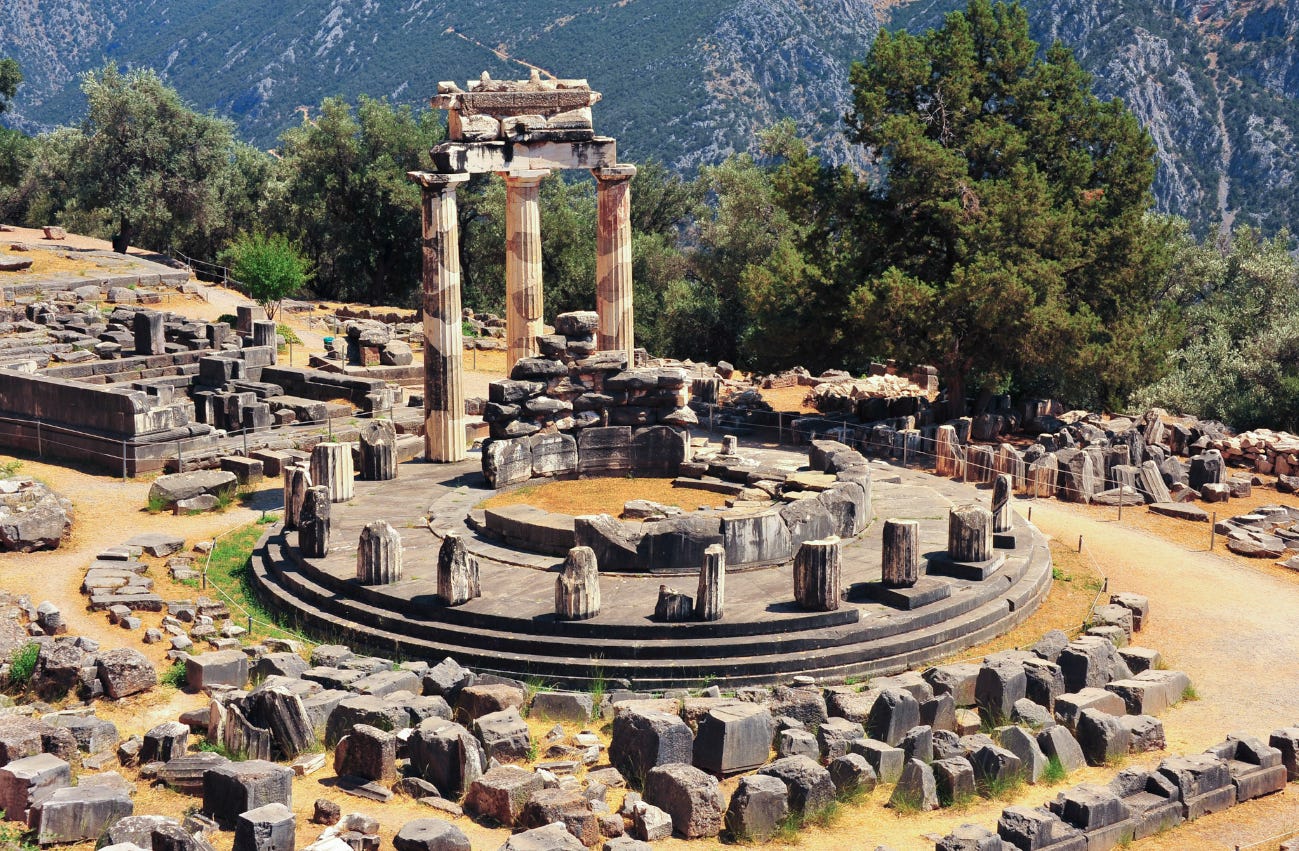
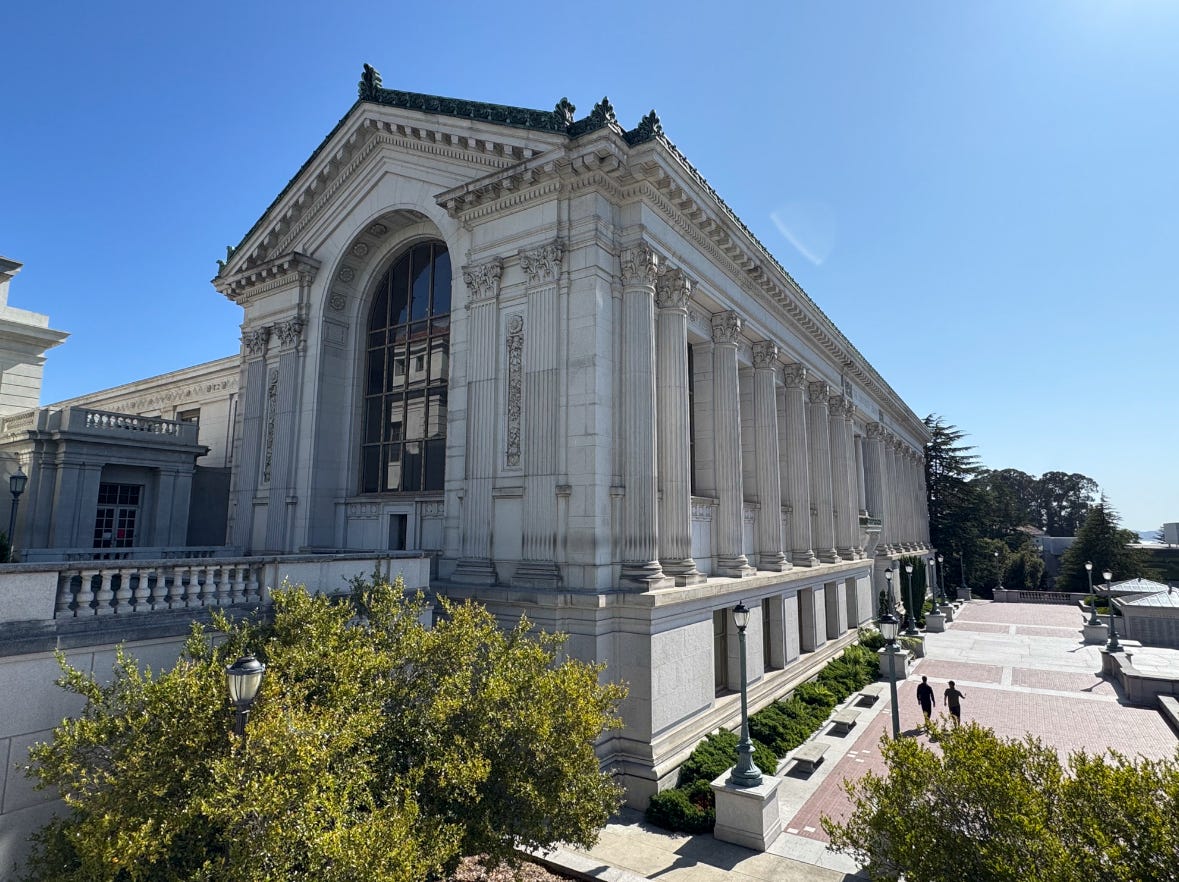
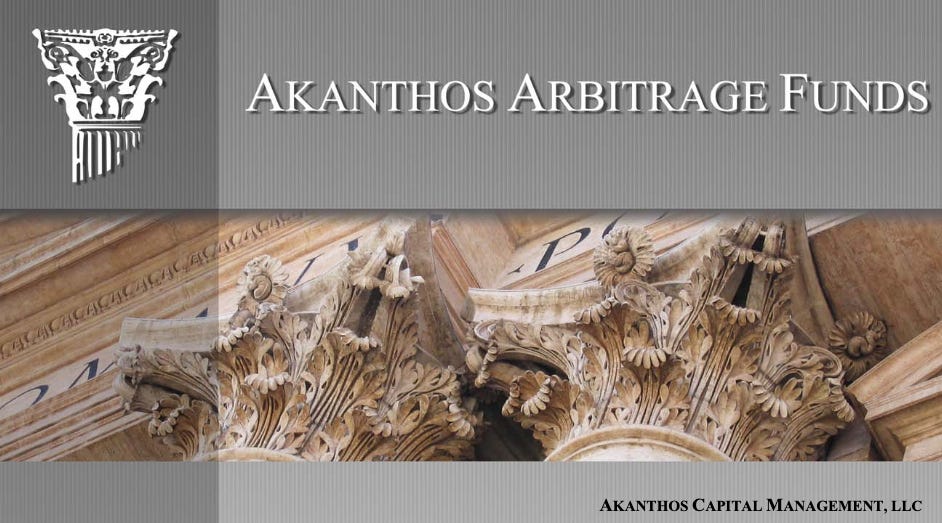
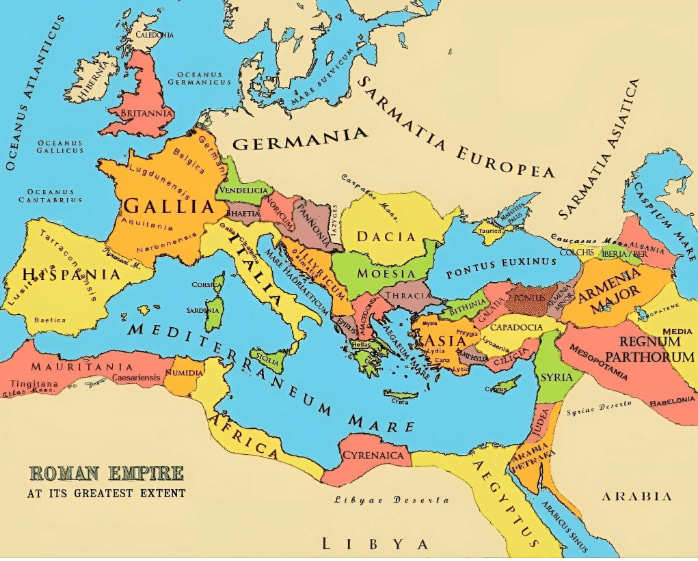
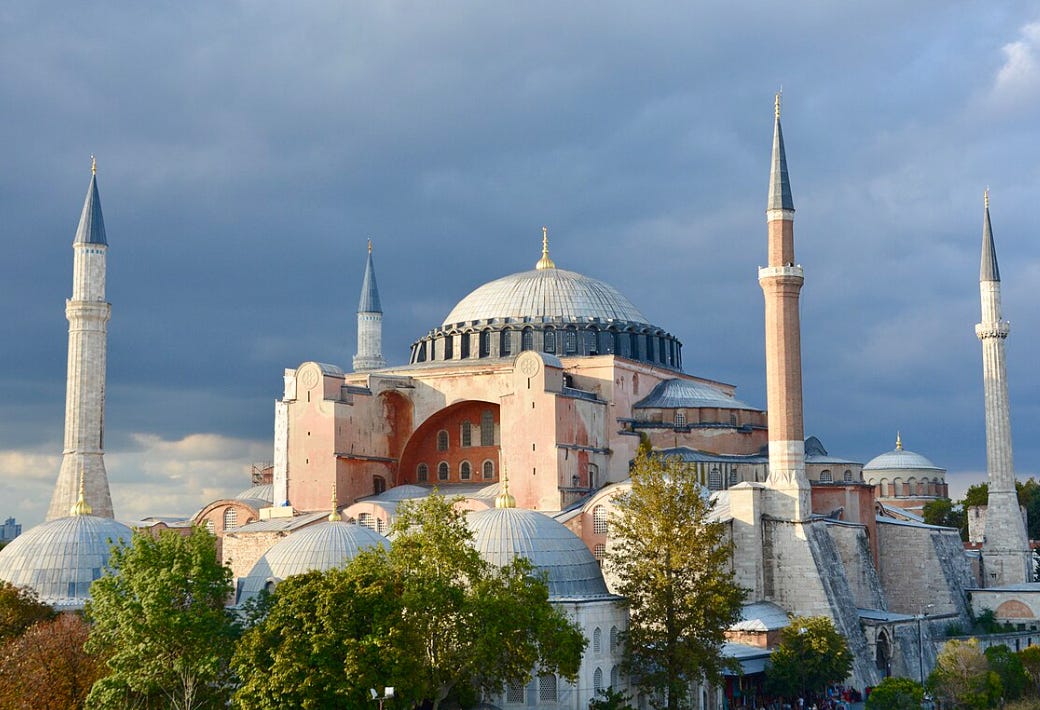
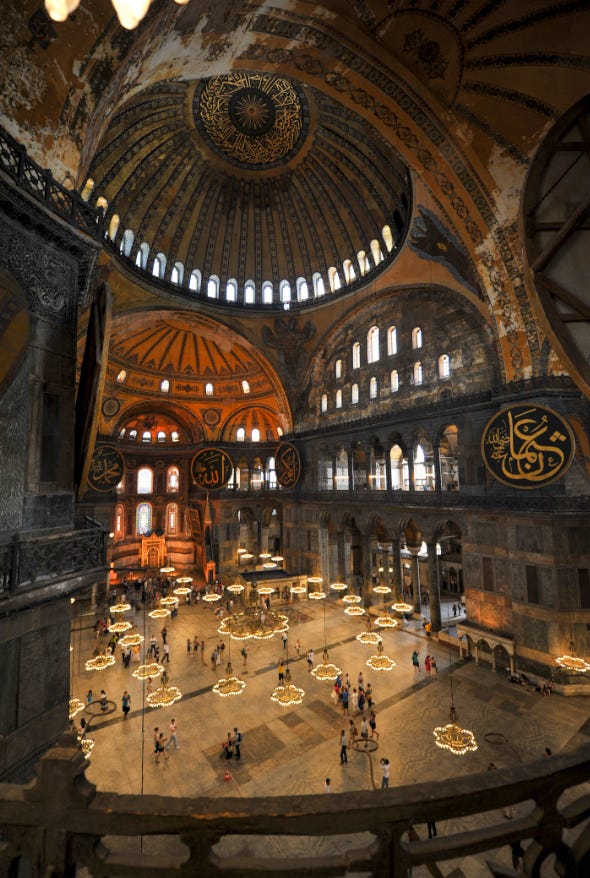
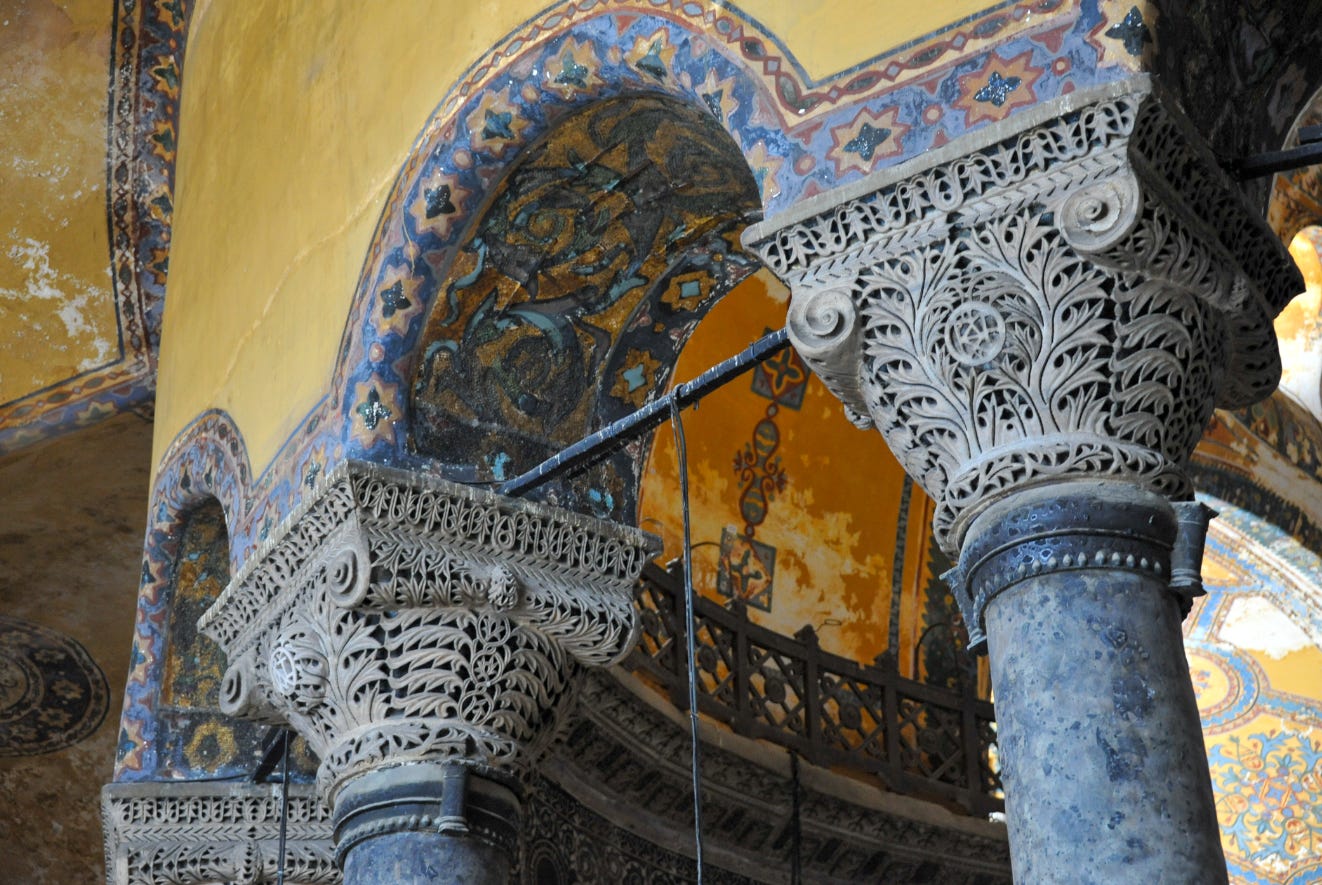
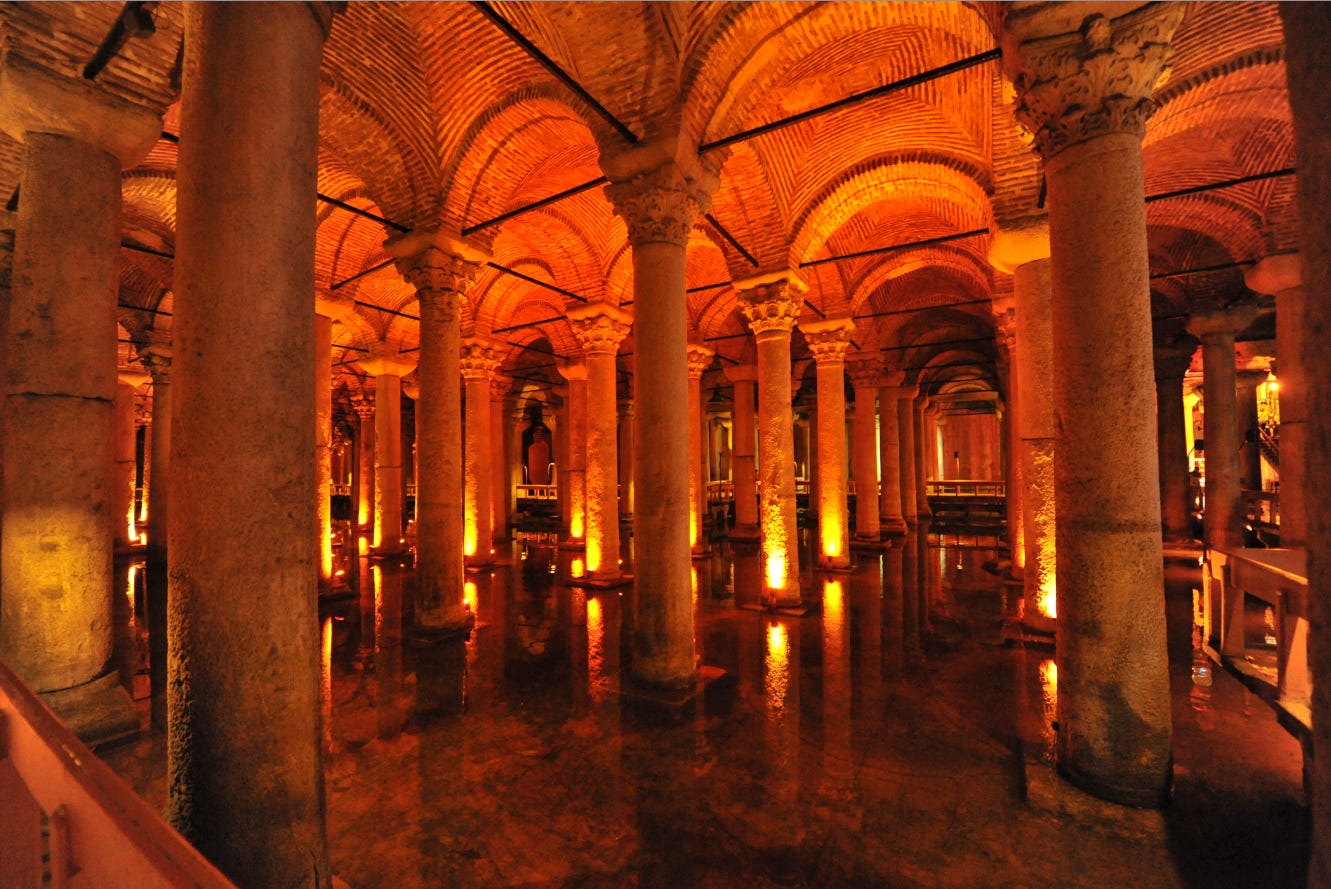
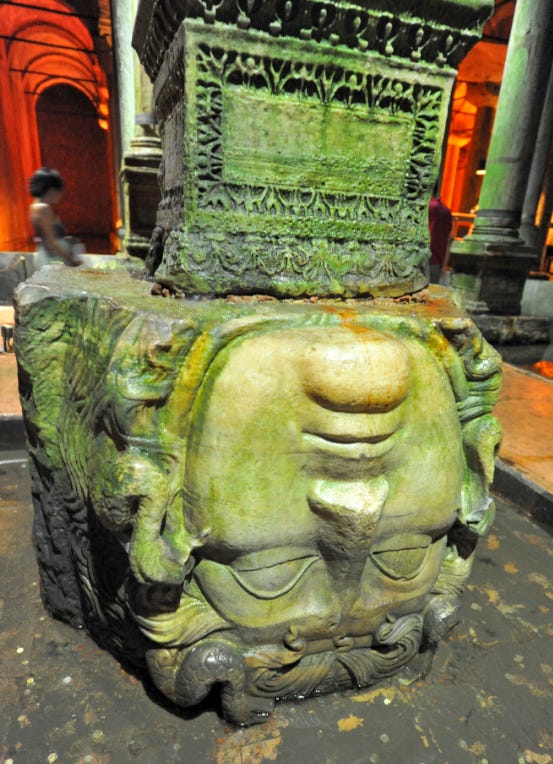
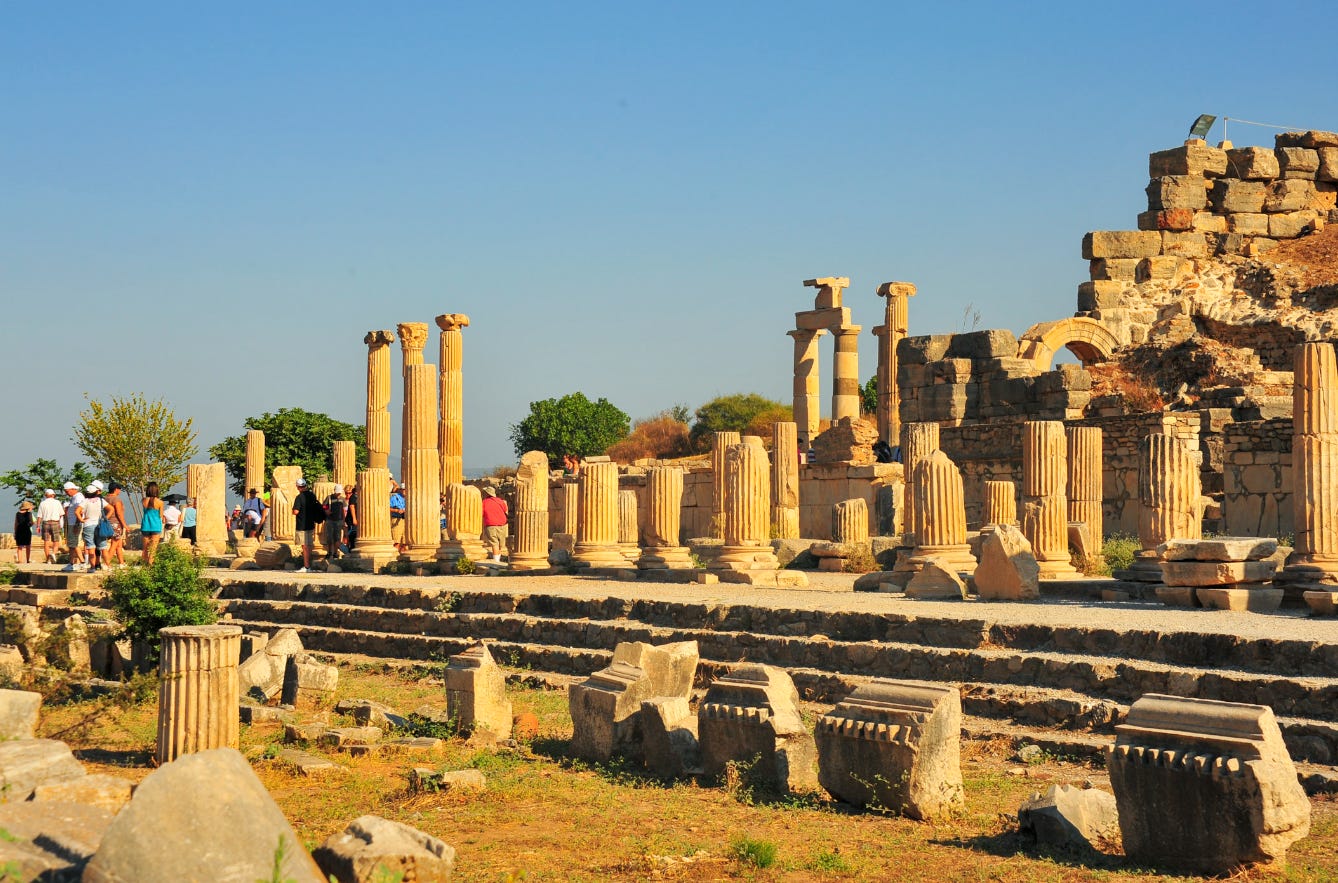
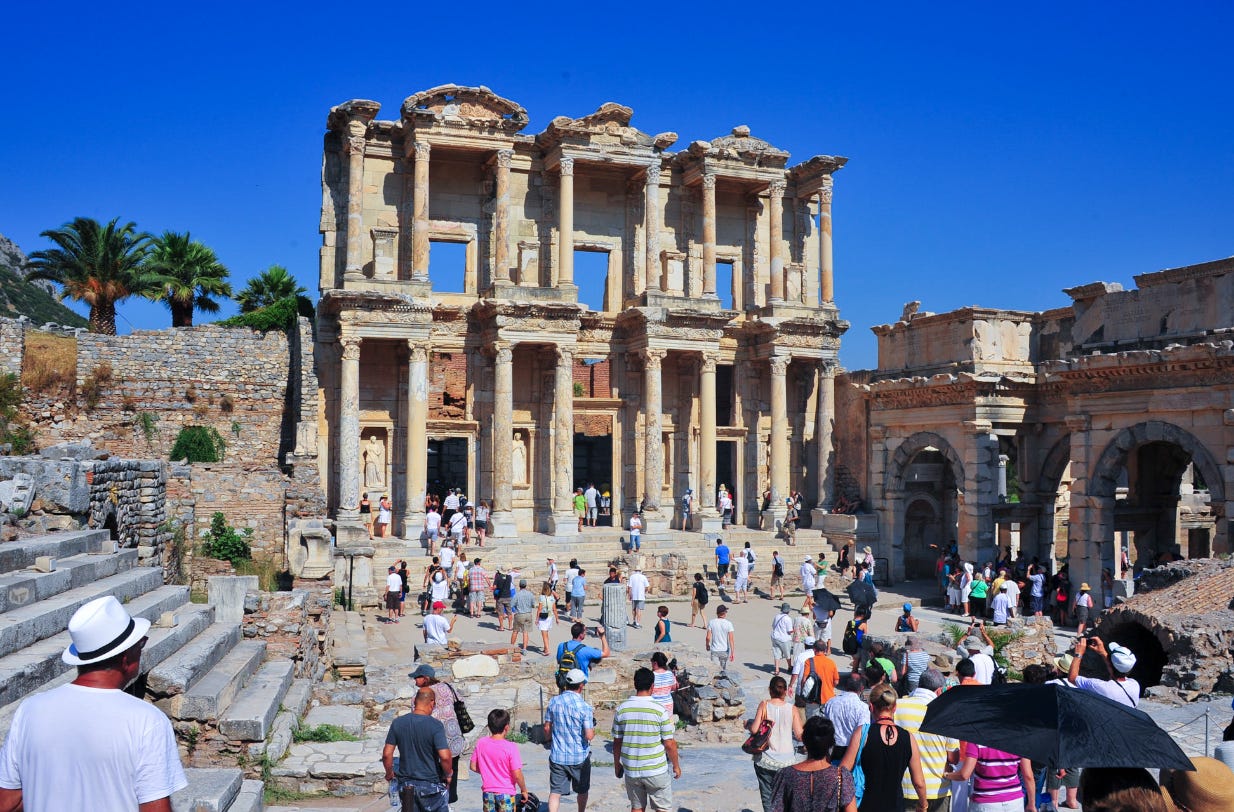
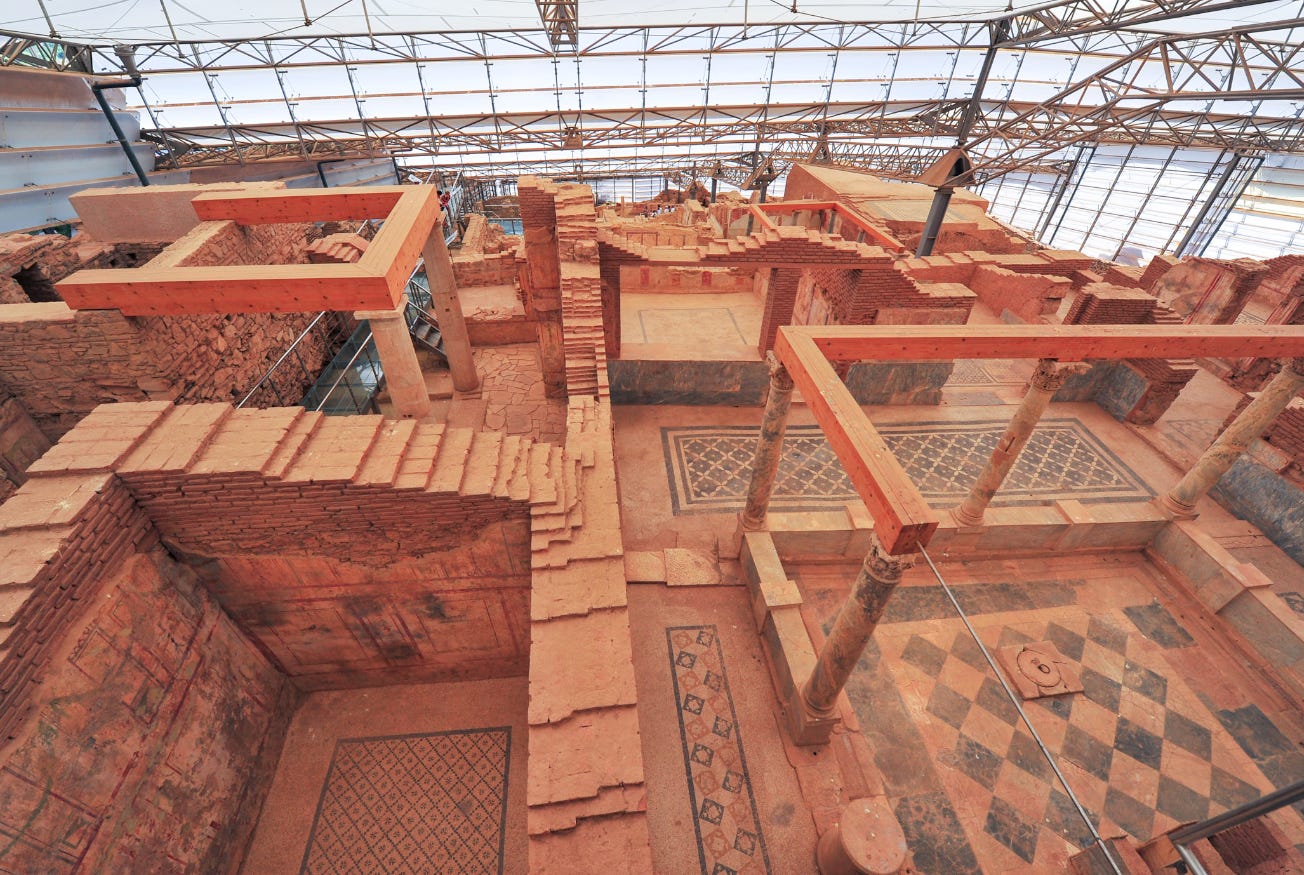
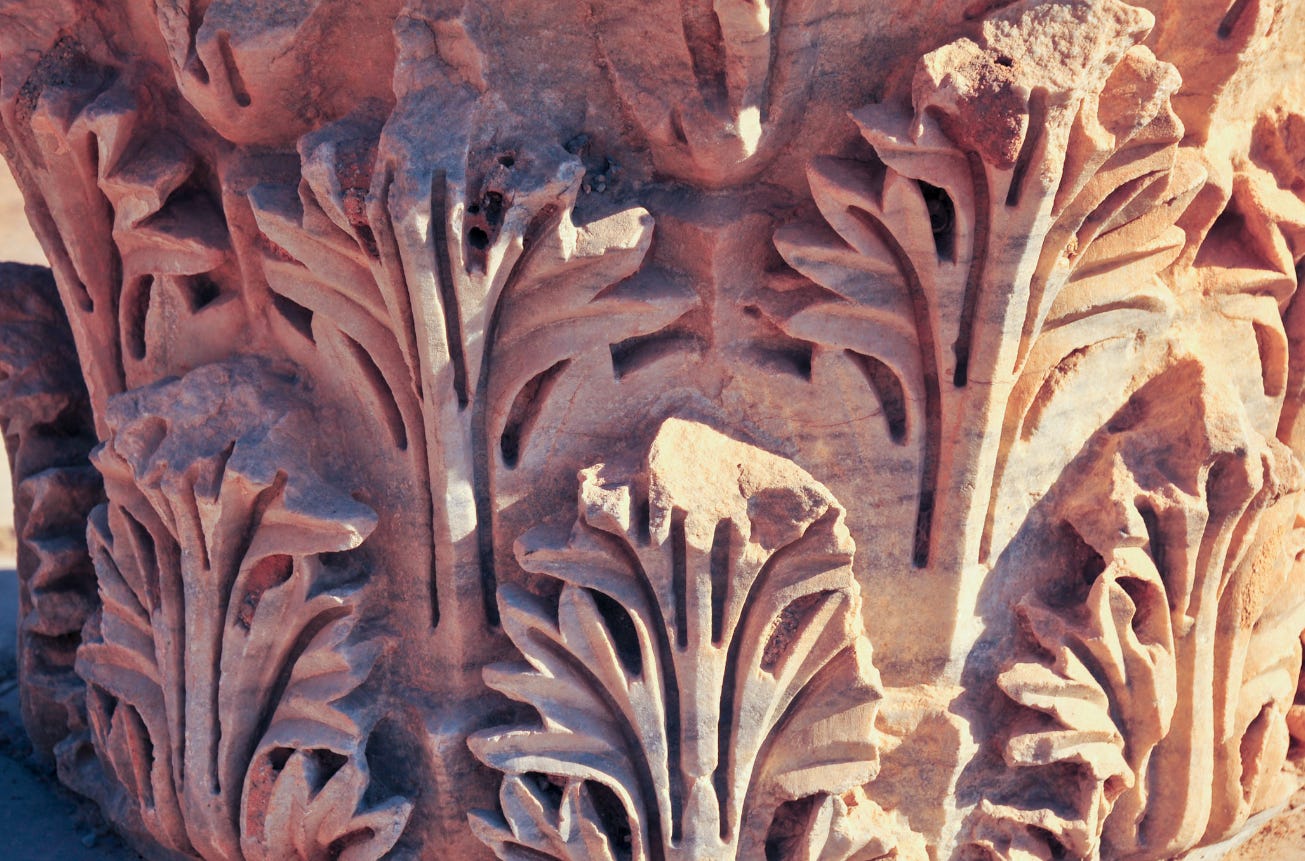
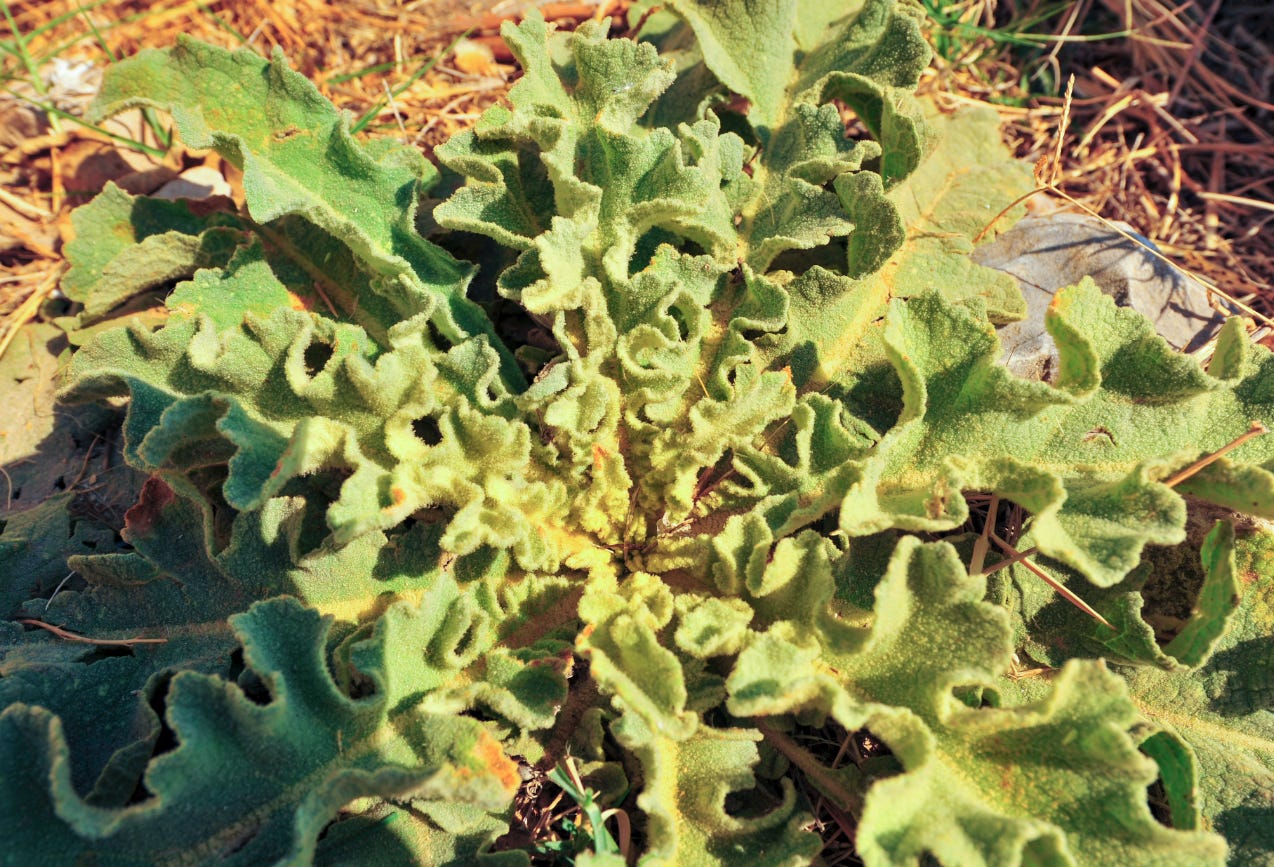
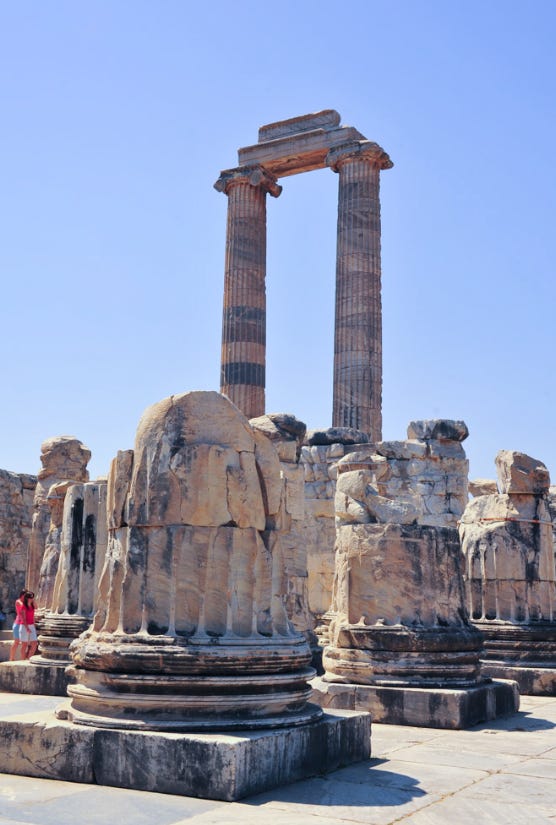
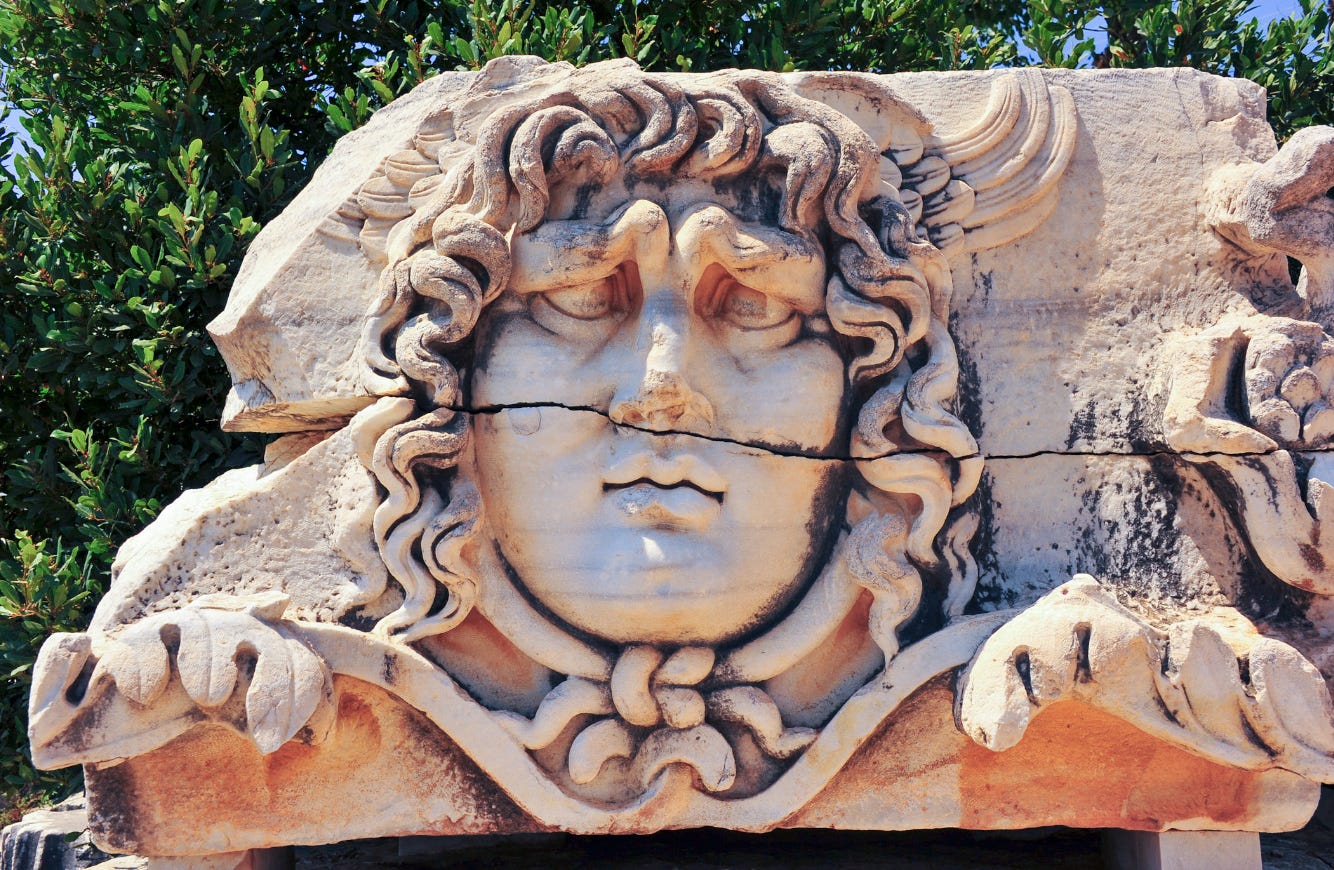
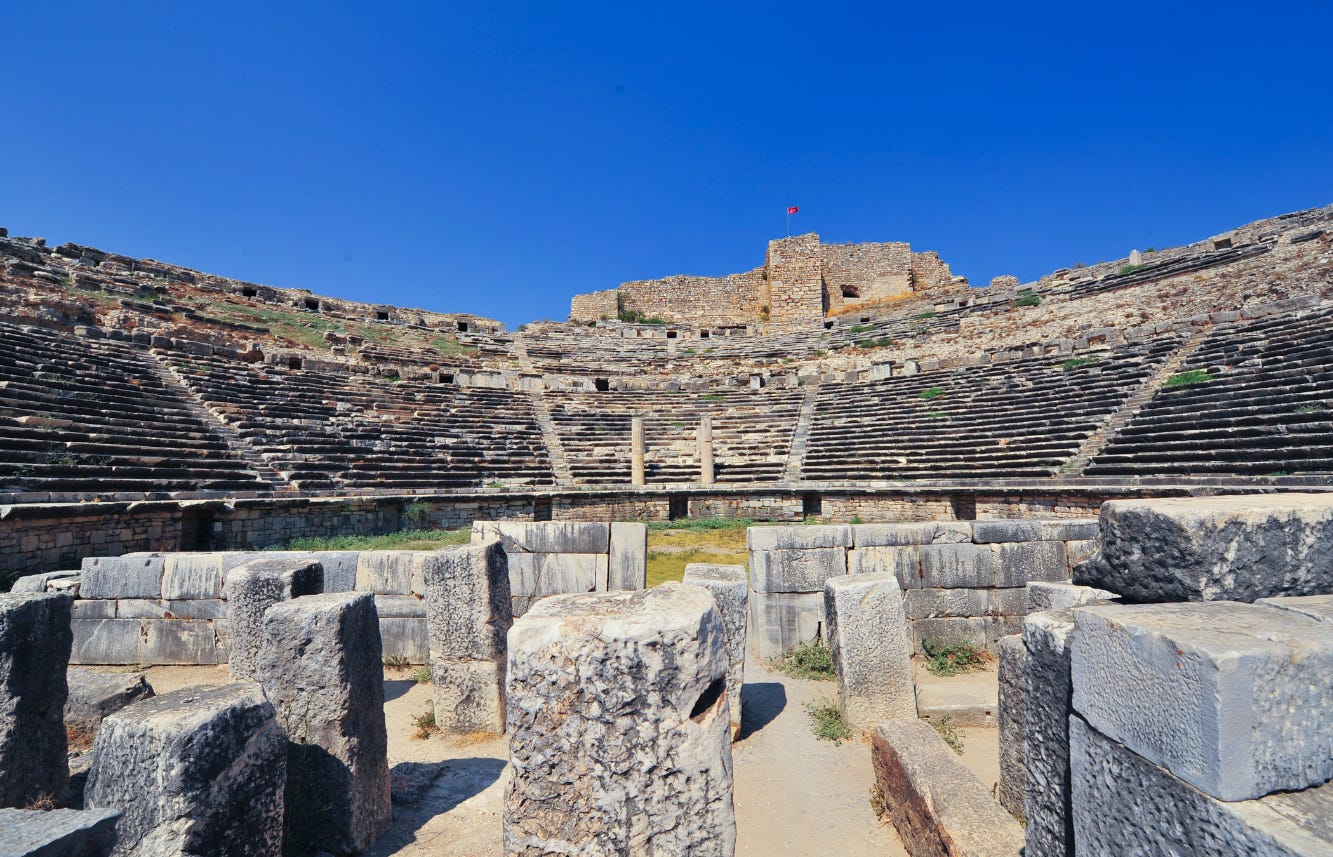



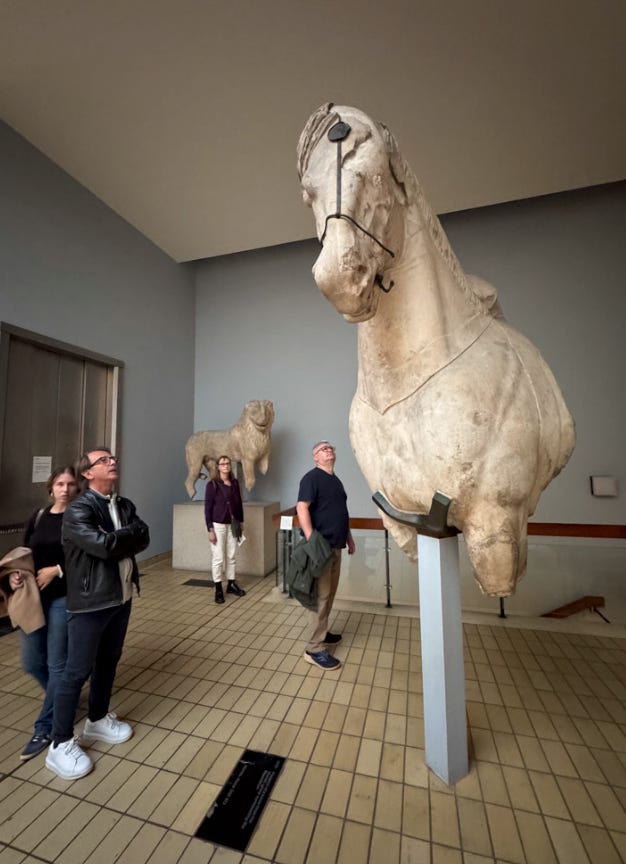
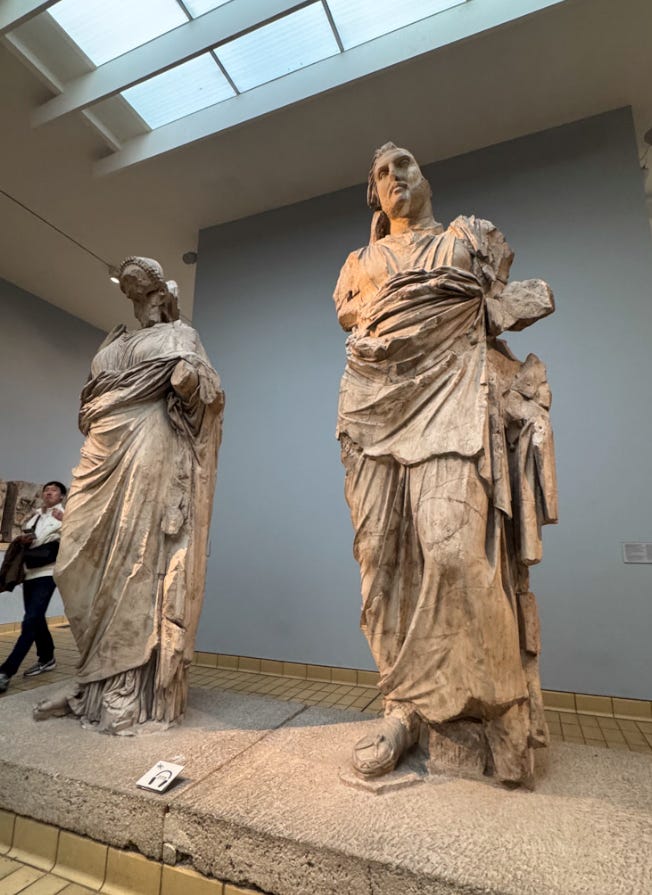
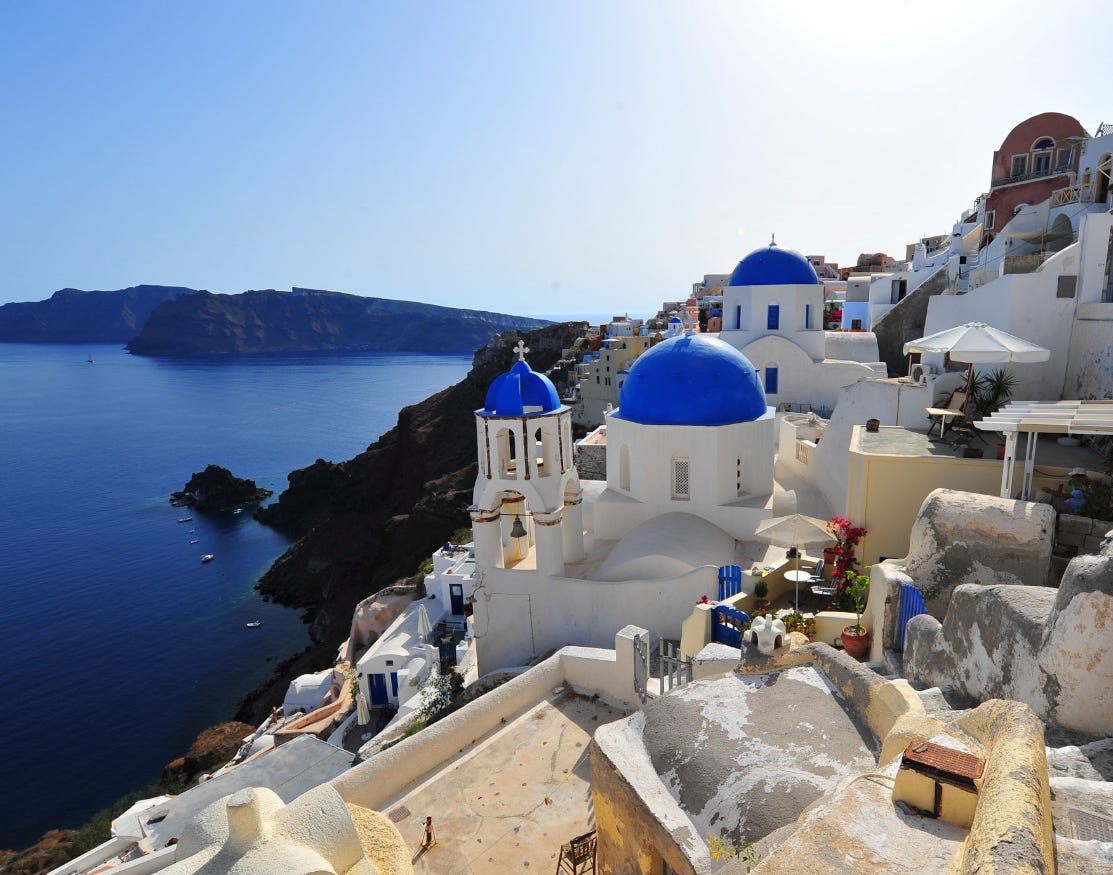
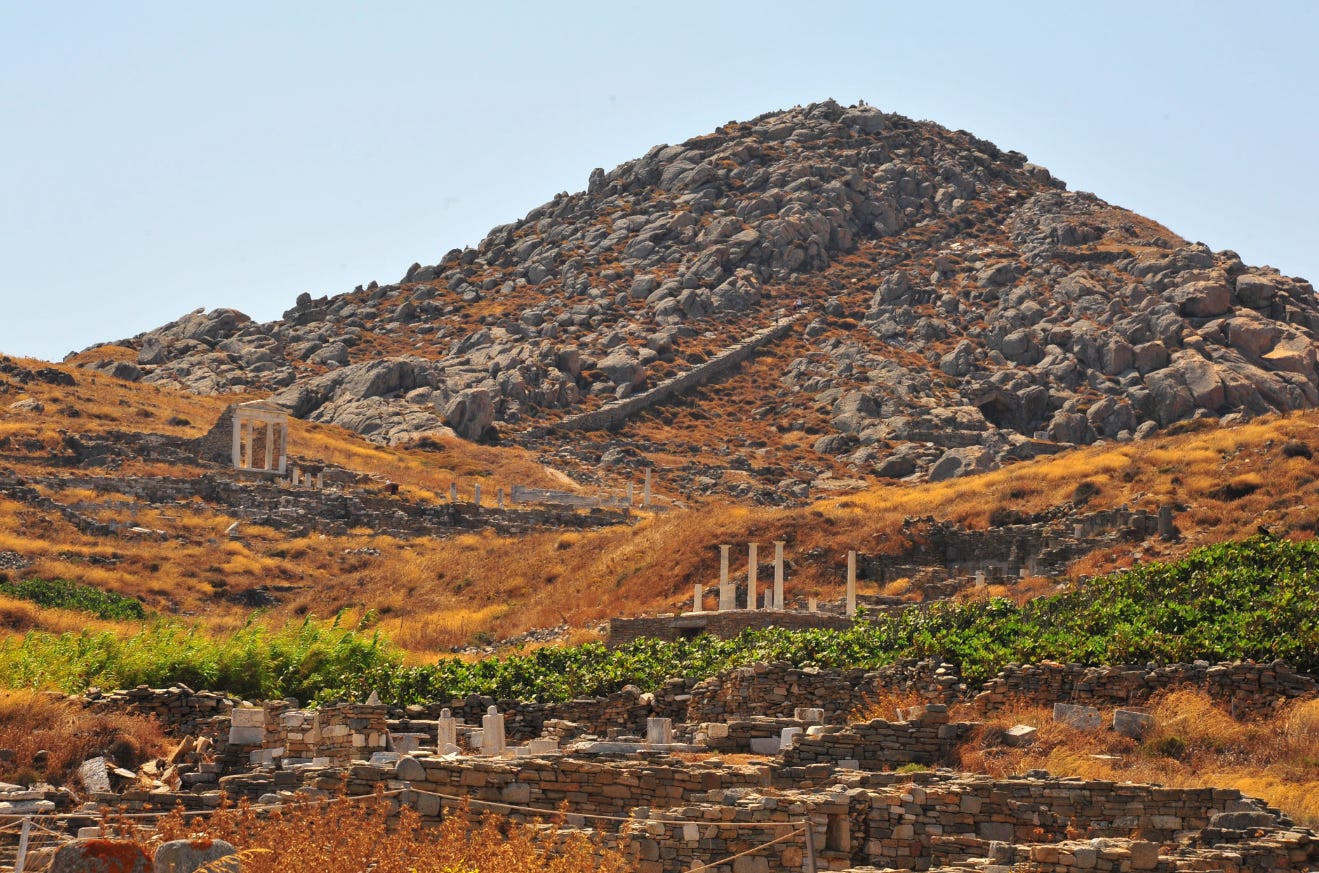
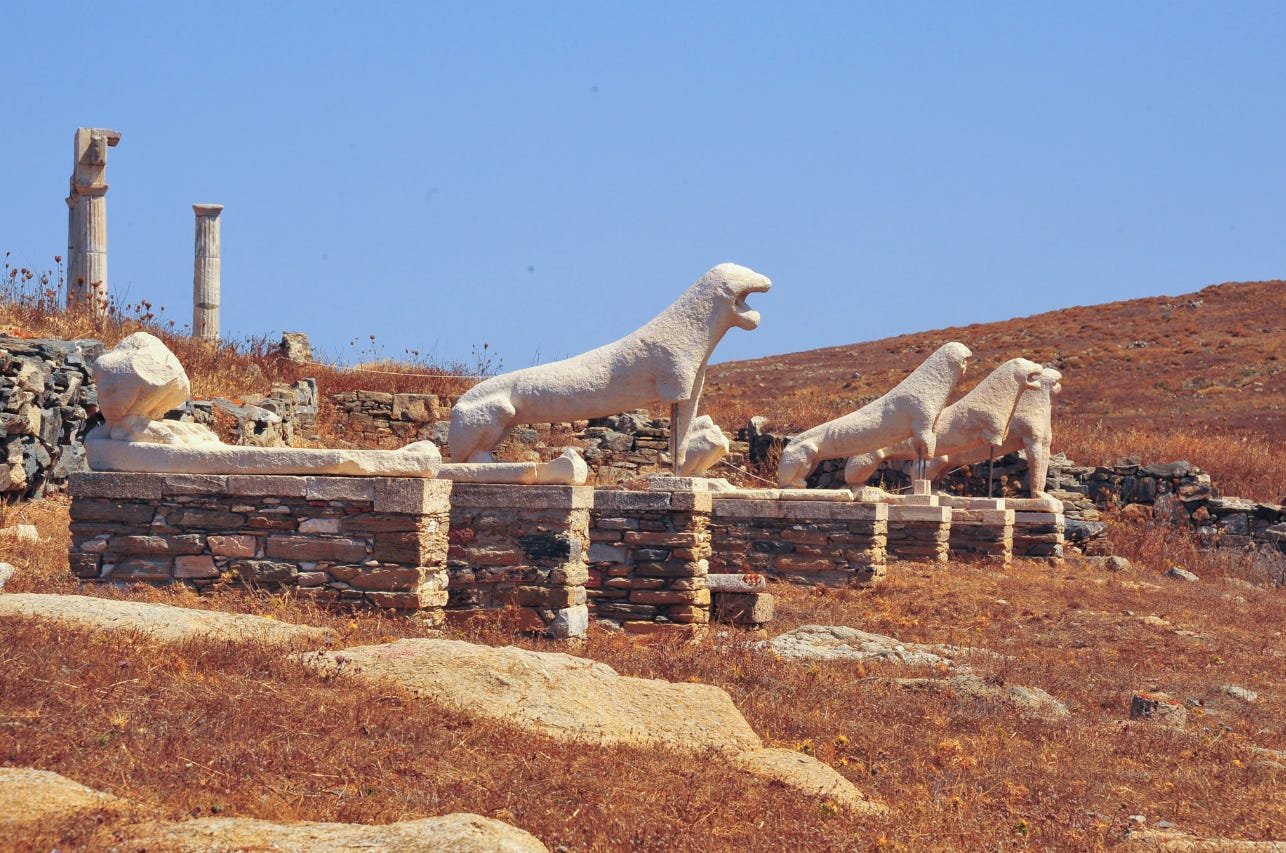
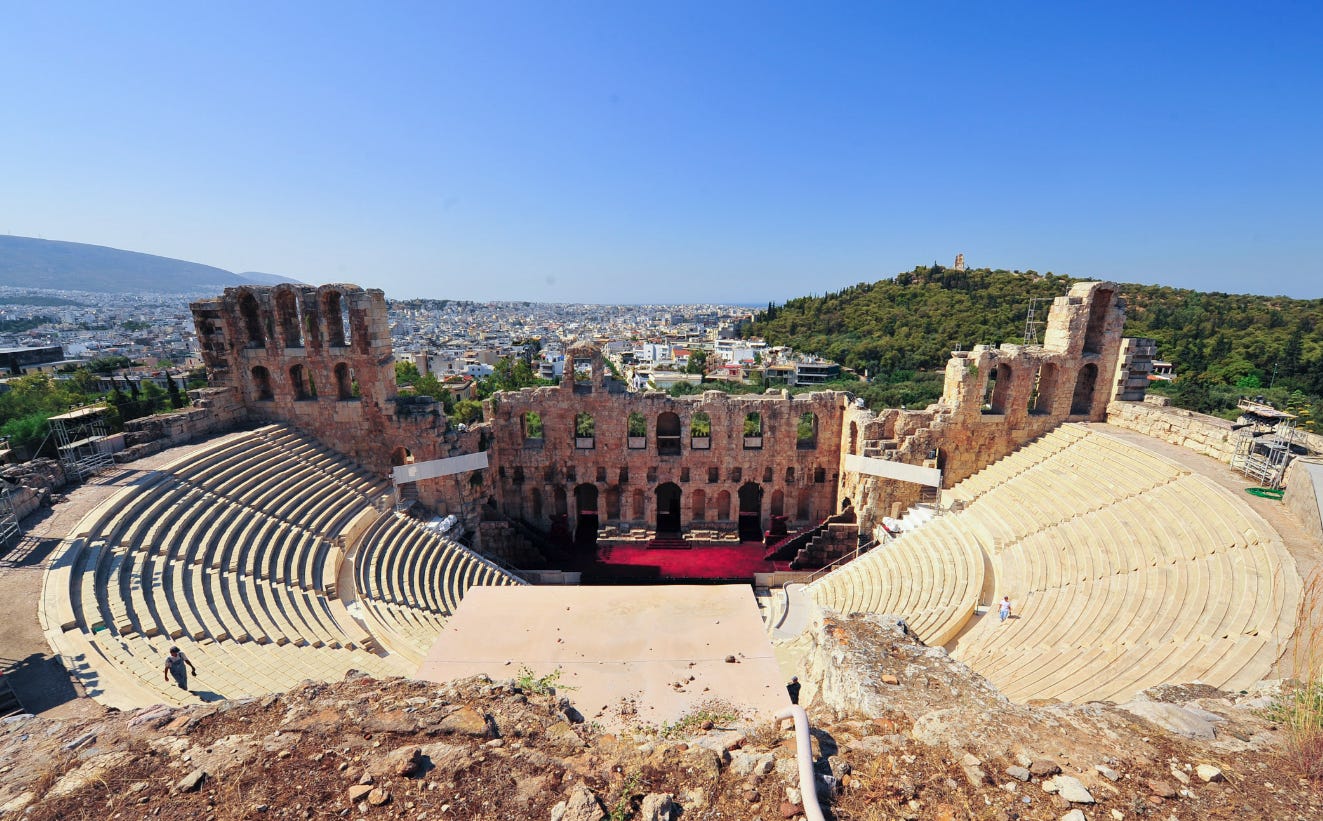




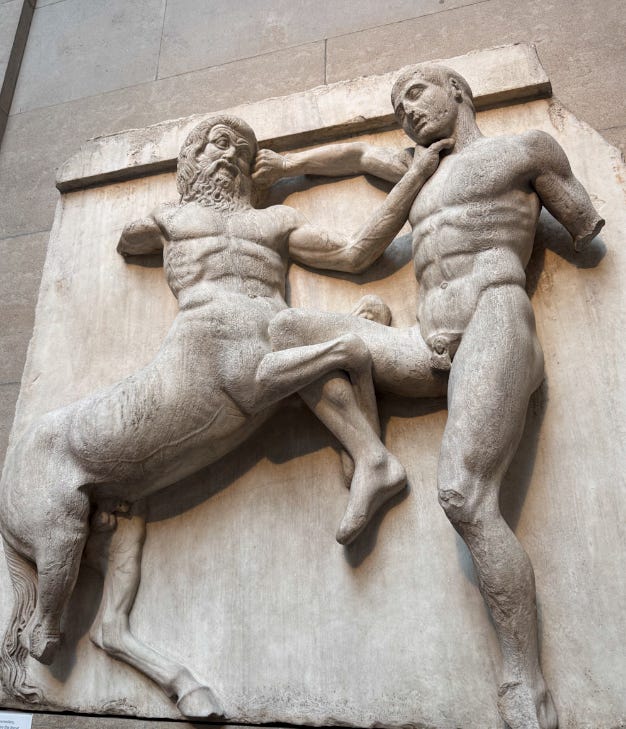
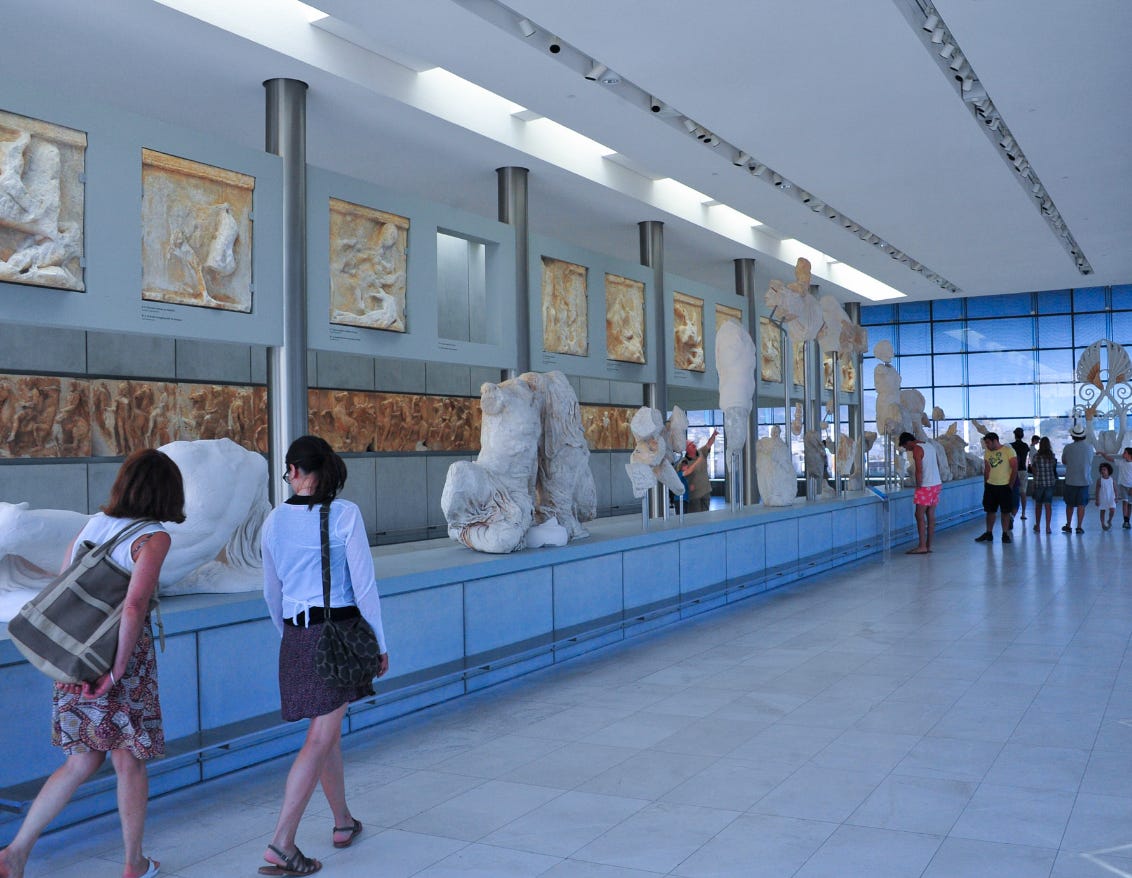
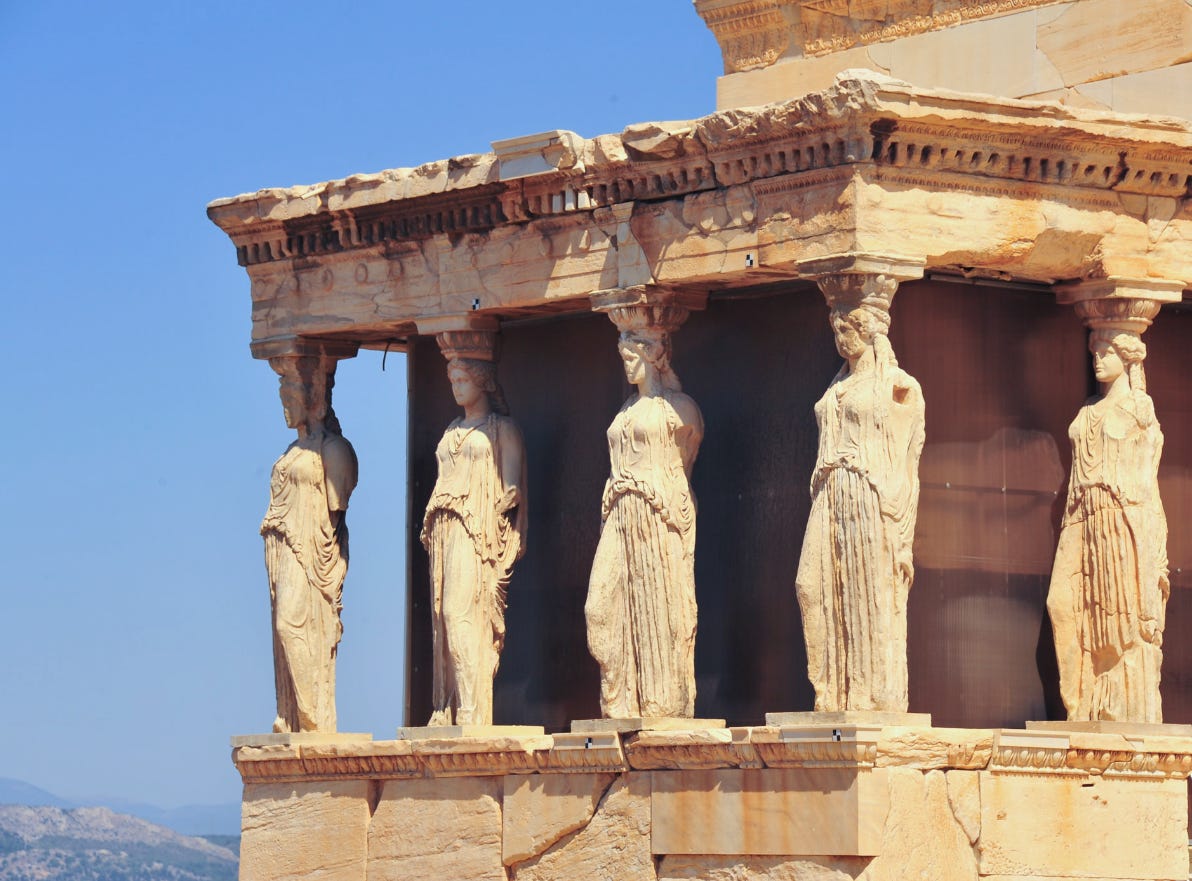
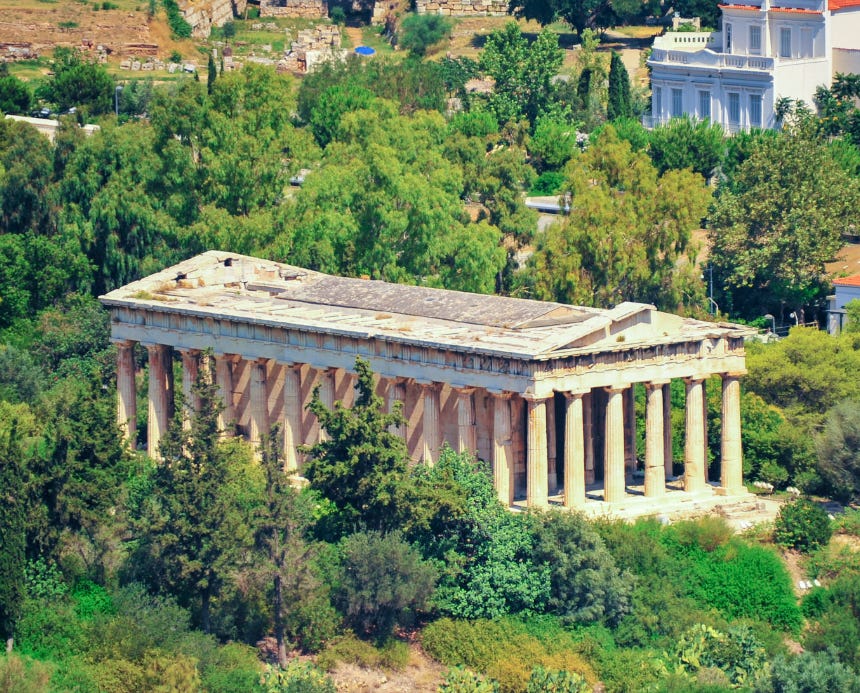
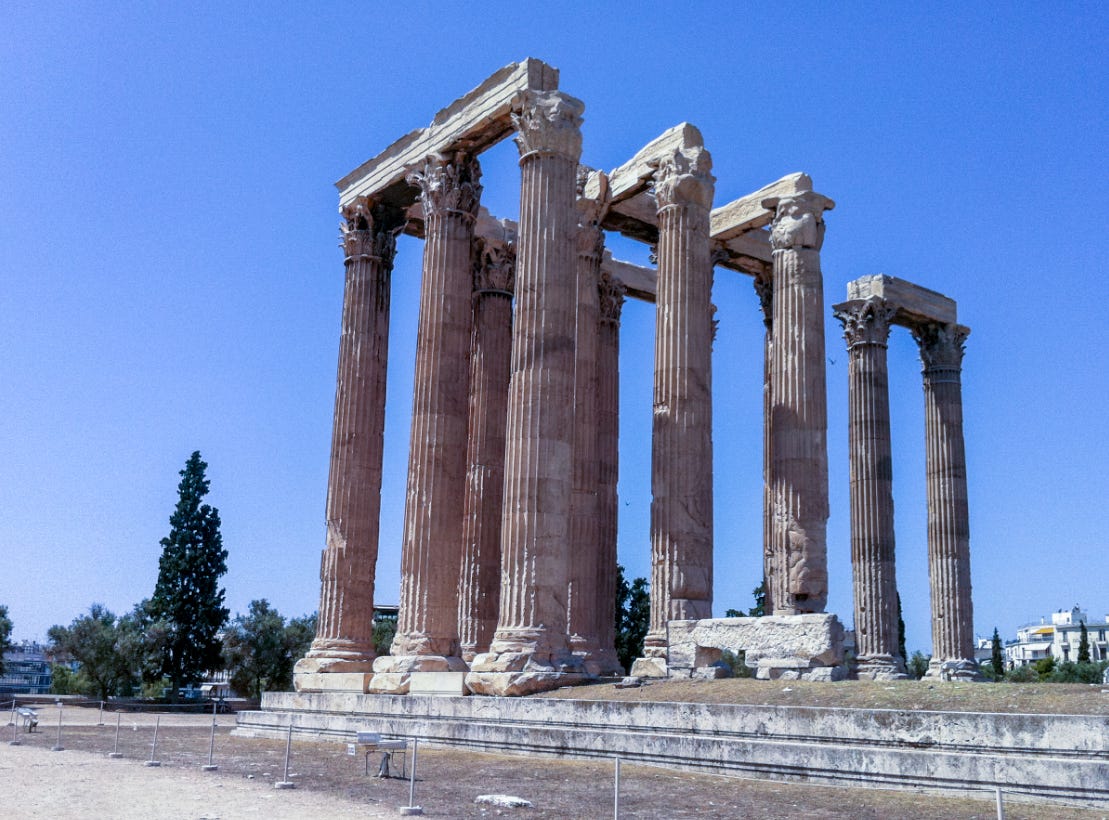


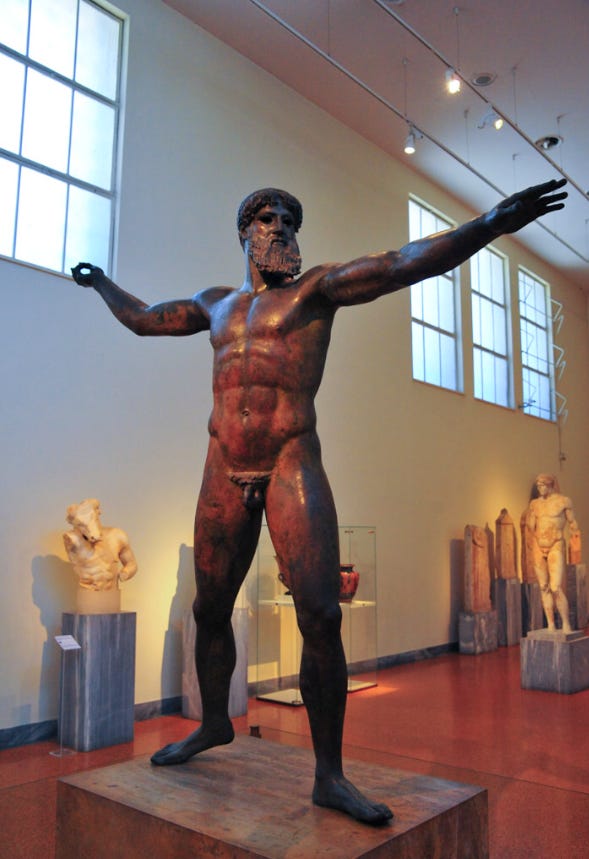

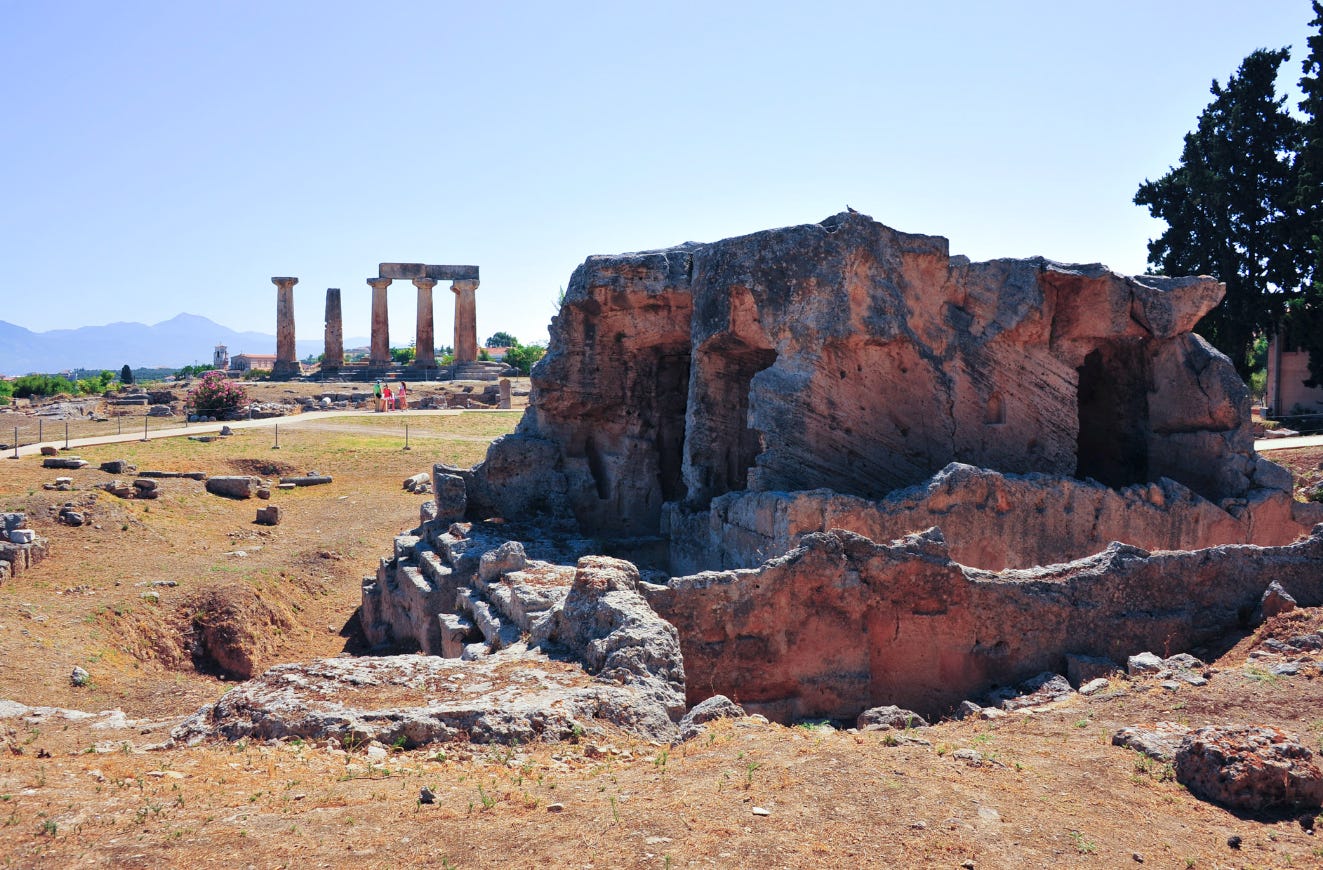
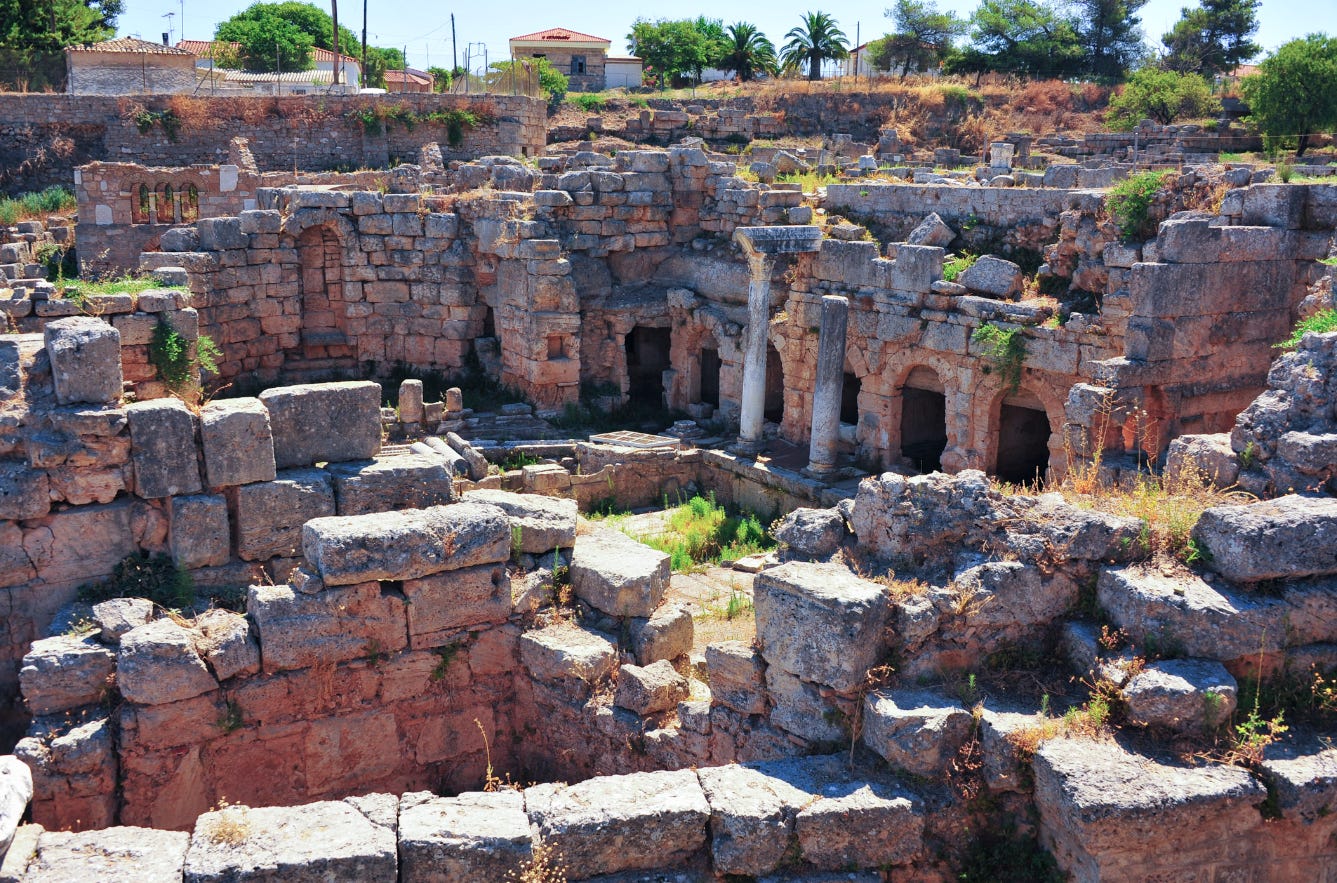

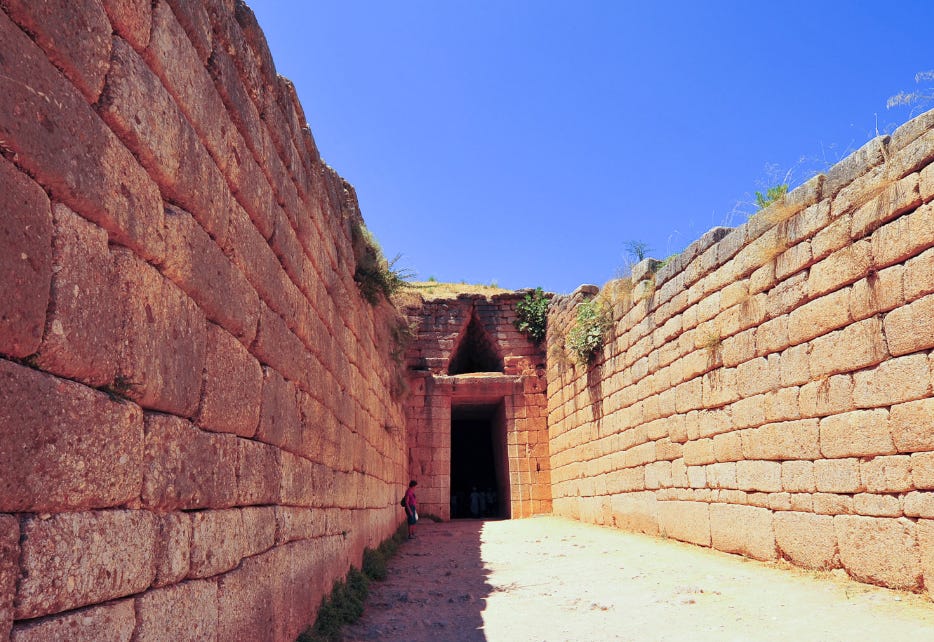

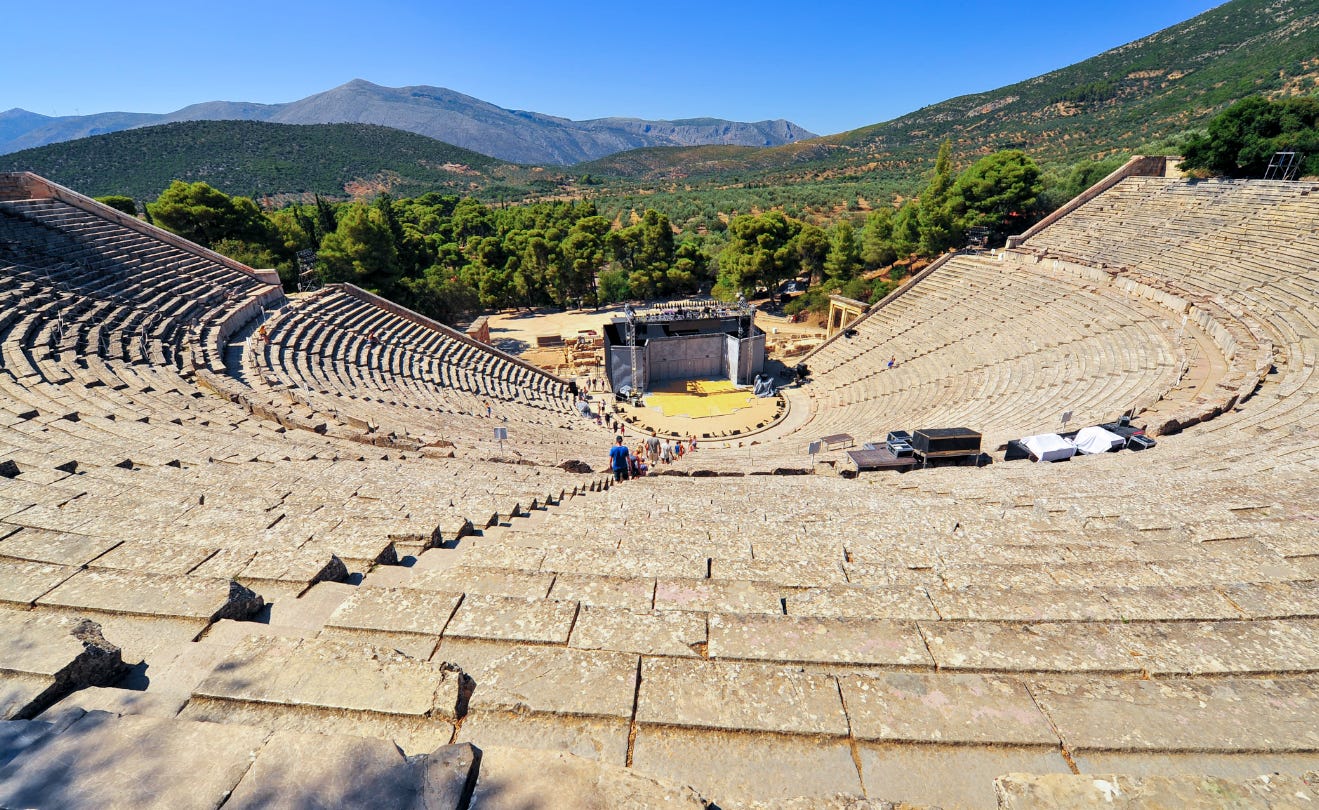
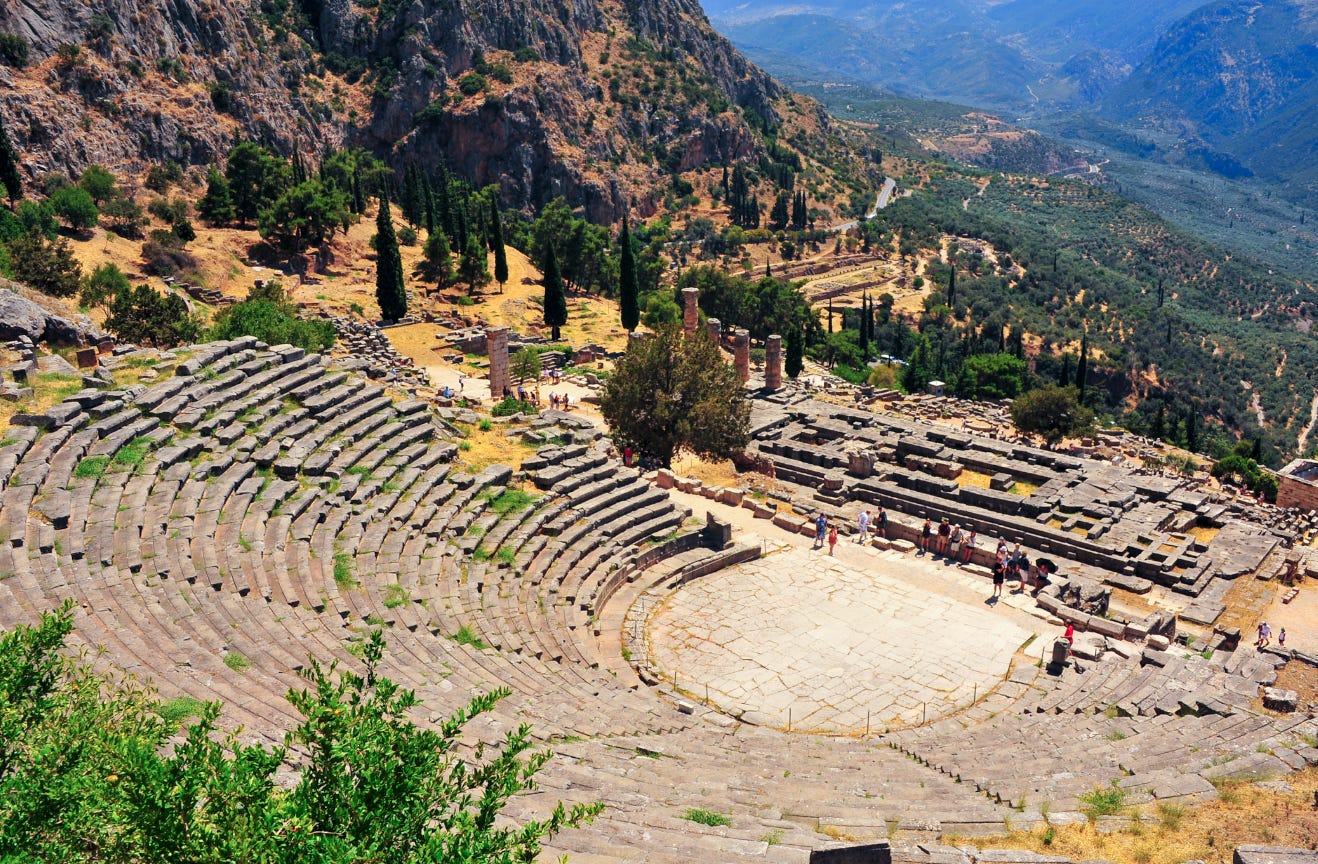
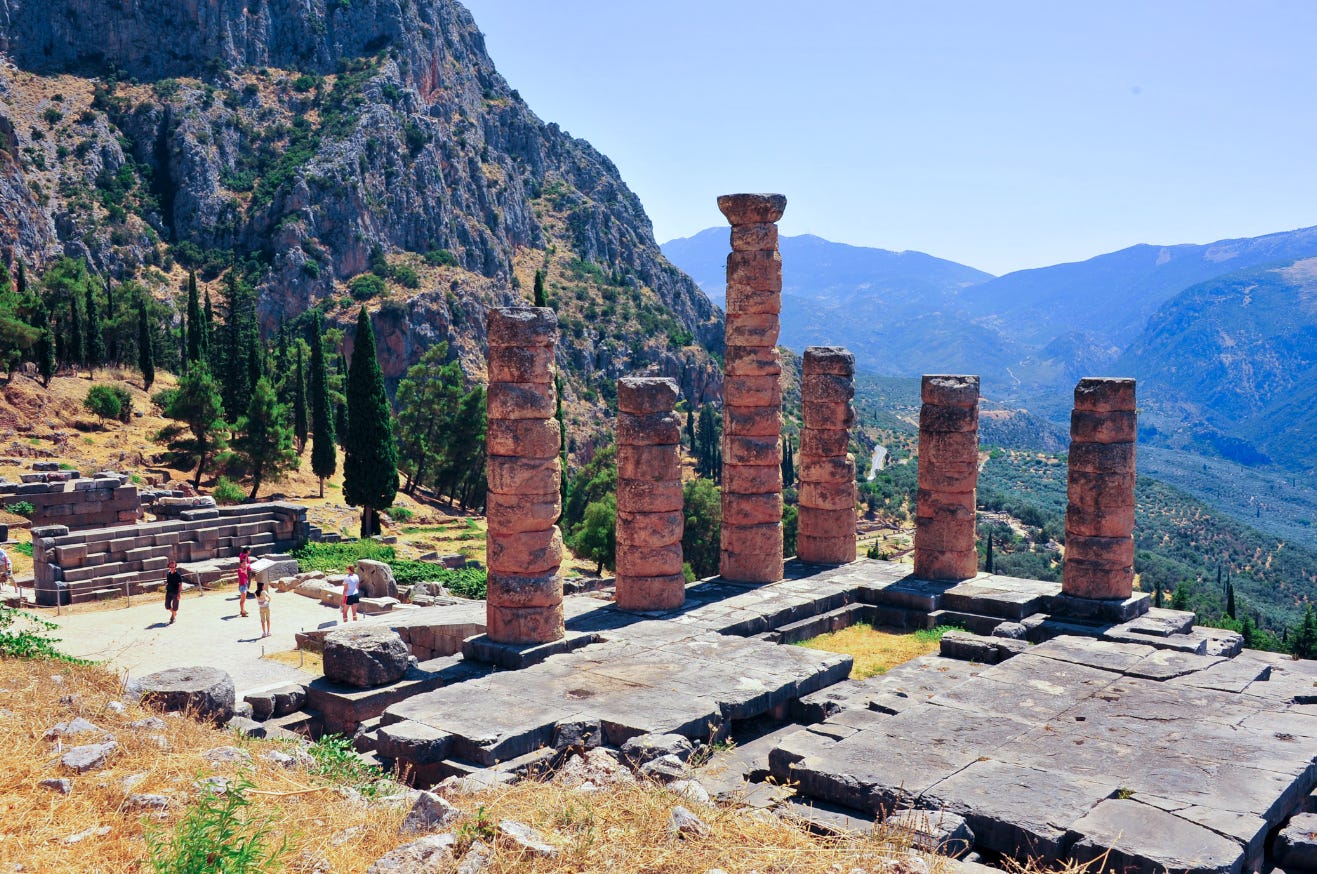
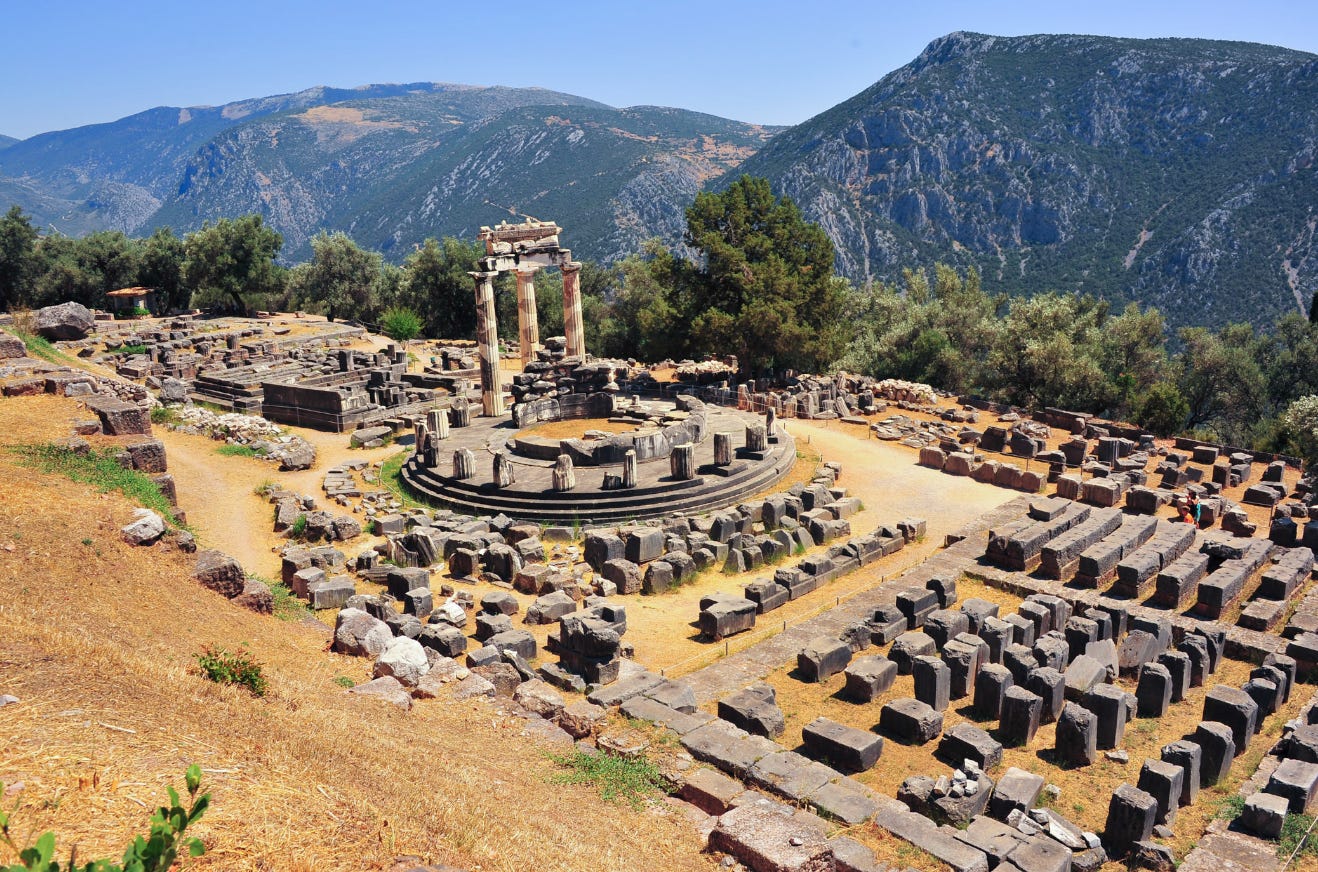
Thanks for so much for taking the time write this piece Michael! Your recent travels have completely captivated me and been fun to follow on substack. I’ve been in love with antiquity since I twelve. When I lived in Europe, my highlights were visiting Roman and Greek monuments.
Thanks Michael. I've traveled much and appreciate your perspective on your experience.